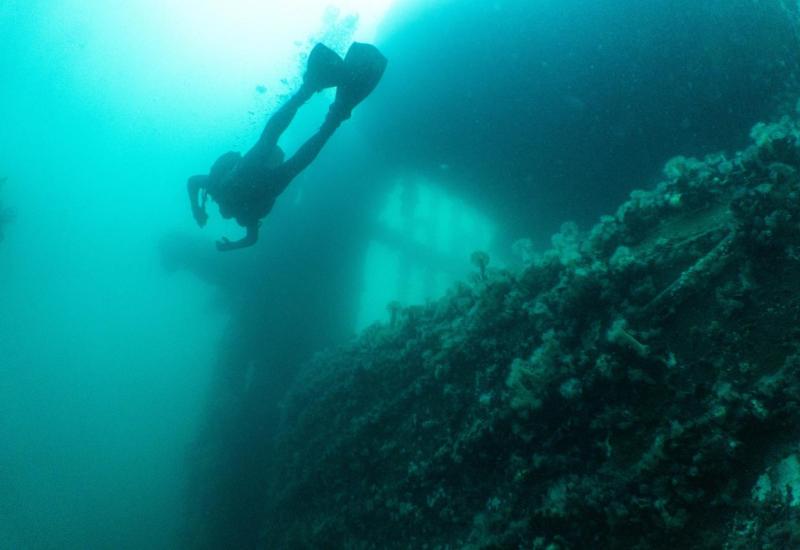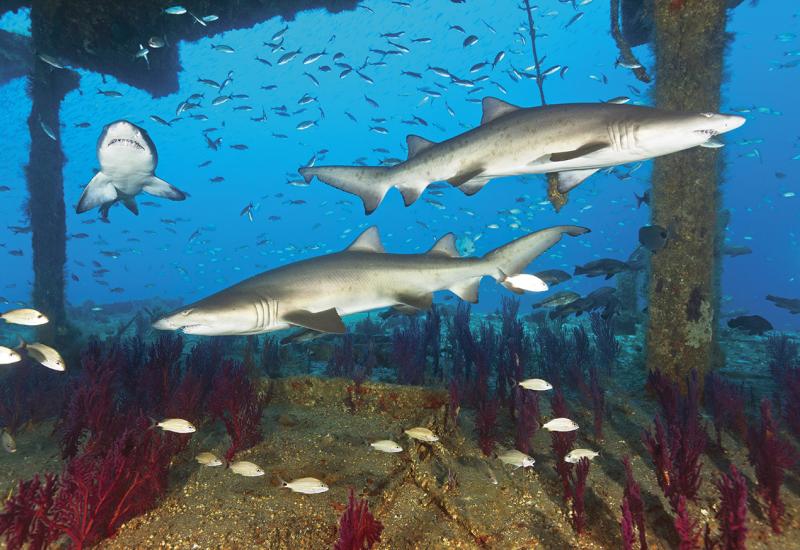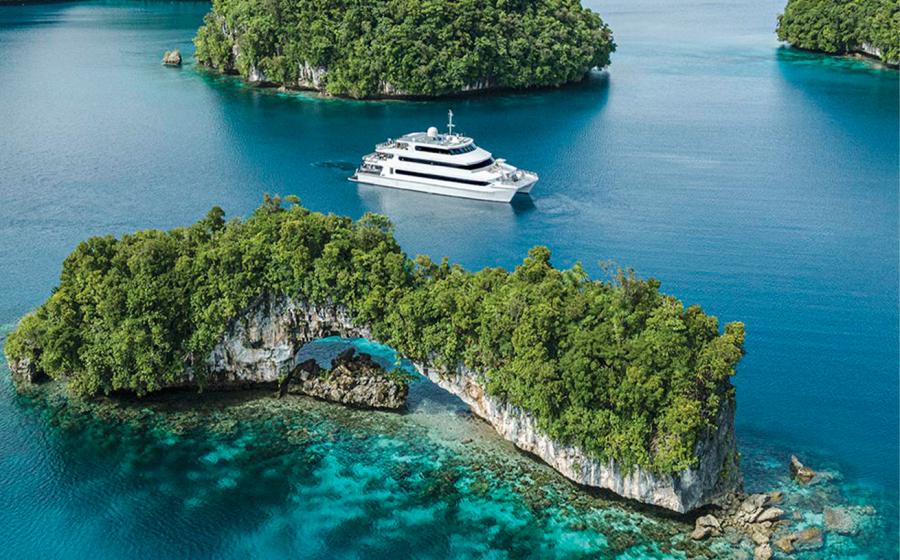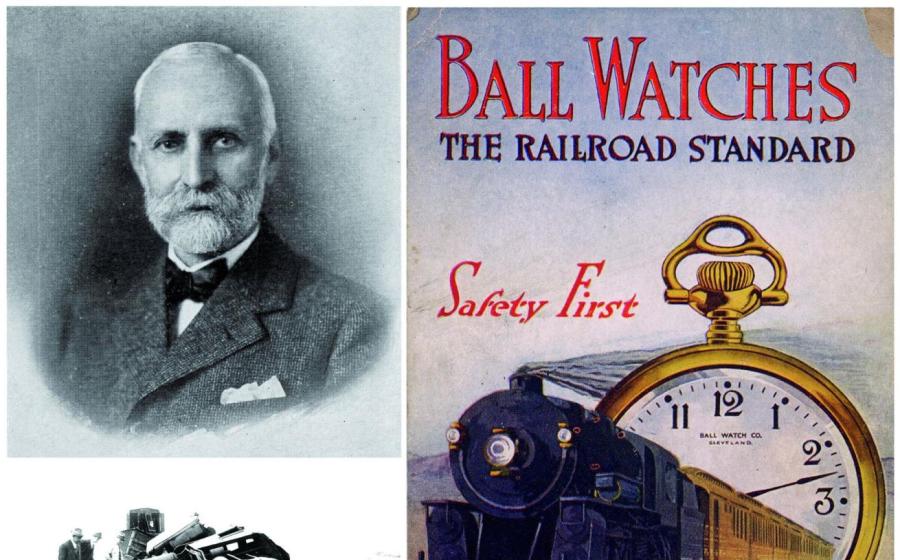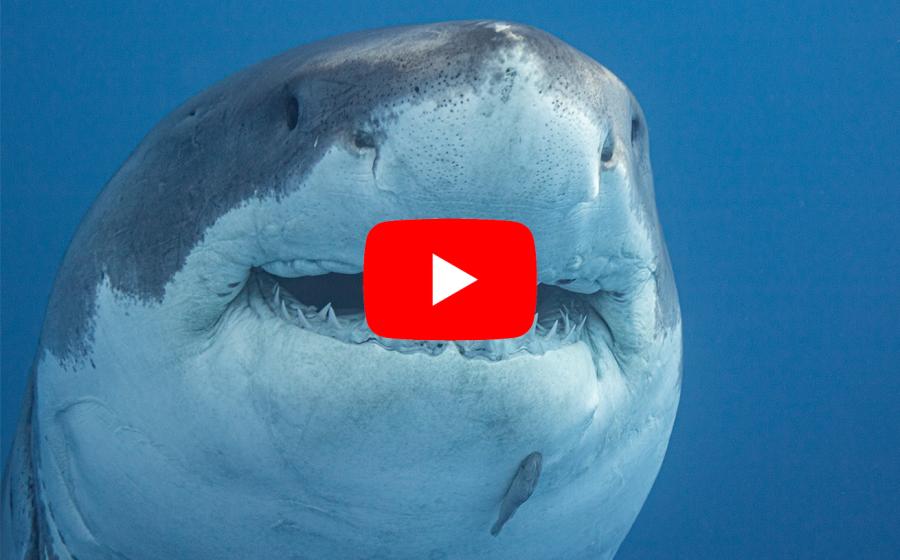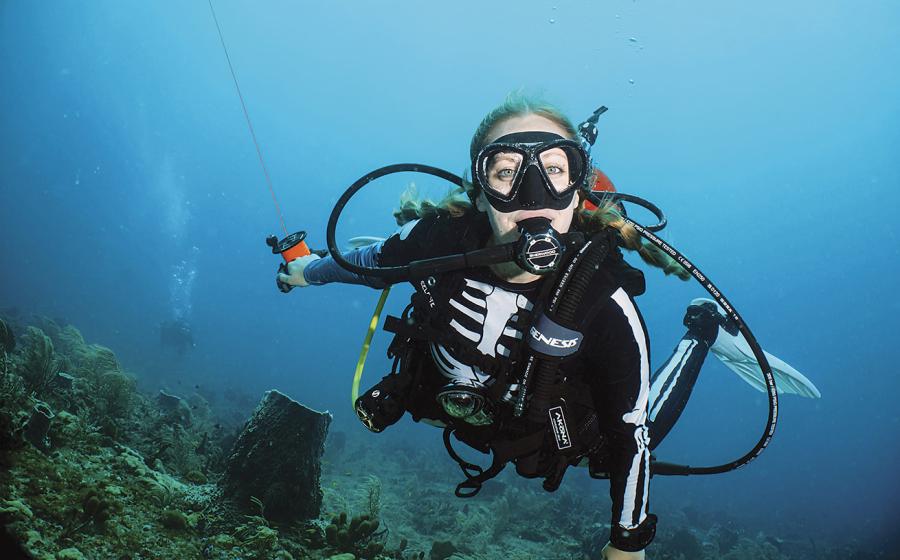The Outer Limits
The Outer Limits
Does North Carolina have the best wreck diving in America?
Hovering in a gentle current, marine life is thick all around the wreck of the Aeolus. Feisty jacks, frantic tunnies and numerous other menacing predators patrol the perimeter of the wreck in pursuit of frenzied baitfish. A crew of hulking barracudas loiters around in midwater like thugs on a street corner, while from a safe distance, countless weary groupers mill about on the bottom trying to make sense of the noisy invader. The spectacle grows only more intense as I discover a dozen or more sand tiger sharks inside the wreck. They show no fear as I approach. With the exception of my camera trigger finger firing off photographs, I remain motionless under the top deck of the wreck while the sharks swim around and around within arms’ reach. One after another, they bump in to my dome port with menacing ragged teeth bared. Even the repetitive bursts from my strobes won’t startle them. The subject matter is perfect, and scoring great images comes easy — just another banner dive day on the Outer Banks.
As long as ships have sailed across the Atlantic, they have found their way to the Outer Banks of North Carolina. But the 150 miles of beautiful barrier islands were not a welcomed site for some of these intrepid vessels. Many met their doom here, victims of hazardous shoals, rough waters, German U-boat attacks or simple human error. The tragic irony is how these sunken ships have now become a haven for divers who visit here to explore the remains that inhabits them.
Diving the wrecks of North Carolina can require patience at times due to occasional heavy winds and strong currents that create challenging conditions, and sometimes keep dive boats tied to the dock. The one- to two-hour passage offshore into the Atlantic can be tough on those who lack the seasoned stomach for open-ocean travel. And because average depths run around 110 feet, novice divers might be intimidated. But there are some fantastic inshore wreck sites that sit in only 60 feet of water that have entertained beginners for years, and with the bonus of a much shorter boat ride. These shallow wrecks are also great for conducting training dives and building up skills and confidence to venture offshore to the deeper wreck sites with stronger currents. And when the warm clear waters of the Gulf Stream push farther north and closer to the coast during the summer months, dive conditions can verge on tropical, with water temperatures reaching the low 80s on the surface, and visibility sometimes exceeding 100 feet. To those who frequent the region, the challenges of the Outer Banks is a rite of passage, and well worth the access to these world class wrecks. Because on any given day, an offshore dive here can produce a once in- a-lifetime underwater experience. In other words, when it’s good, it’s awesome and worth every effort.
Five Top Wrecks
1. U-352
Without a doubt, one of the biggest draws to the Outer Banks is the opportunity to dive on this historic World War II German U-boat. On May 9, 1942, the U-352 was cruising close to the North Carolina coast when it picked a fight with the wrong ship. The scrappy USCG Cutter Icarus was on its game that day when the U-352 opened fired with torpedoes and missed. In retaliation, the Icarus launched depth charges and sunk the U-352 in 110 feet of water, 28 nautical miles south of Morehead City. Thirteen men perished in the attack, while 33 survivors were picked up by the Icarus and returned to Charleston where they spent the rest of the war as prisoners. Sitting with a 45-degree list to starboard and its conning tower intact, the U-352 fascinates divers when they get a glimpse of this amazing piece of history.
2. Papoose
The wreck of the Papoose has a convoluted history since, in actuality, it is the wreck of the W.E. Hutton. During the early stages of WWII, German U-boats wreaked havoc along the Eastern seaboard, sinking numerous Allied merchant ships. In the confusion, the wreck of the W.E. Hutton was misidentified by the U.S. Navy to be the wreck of the Papoose. Even though this mystery has been solved, most still refer to the Hutton as the Papoose. Sitting upside down in 120 feet of water, the 435-foot tanker is a favorite to many divers who come to see the plethora of marine life, which includes the sand tiger sharks that are seen here with regularity. Resting nearly 36 nautical miles from shore, its popularity is increased due to the clear waters of the Gulf Stream; 100 foot of visibility is not uncommon.
3. USCG Cutter Spar
Not all the wrecks of North Carolina met their end due to tragic events. The USCG Cutter Spar is one of the many wrecks sent to the bottom as part of the North Carolina artificial-reef project. The 180-foot buoy tender sits in 110 feet of water with a strong list to port. It’s fully intact, easily navigable and a favorite hangout for sand tiger sharks, schools of Atlantic spadefish and the occasional giant southern stingray. Amazingly, the Spar was moved 200 feet from its original location and rolled over on its port side when Hurricane Irene struck the coast in August 2011.
4. USS SC Hurz
The captured World War I gunship, the USS Schurz, is a classic North Carolina wreck dive. The 255-foot ship was sunk June 21, 1918, 30 nautical miles south of Beaufort Inlet, after colliding with the SS Florida while sailing at night. When discovered in the 1980s, it was popular for those seeking to reclaim artifacts and take home a piece of history. Brass portholes, crew personal effects and weapons were some of the many items removed. Today, it is illegal to take artifacts from the Schurz, and most are content to see the beautiful reef system this wreck site has become. Colorful sea fans, dense schools of baitfish and the occasional shark keep divers returning year after year.
5. Caribsea
A personal favorite, the Caribsea is one of those hit-or-miss dive sites. Notorious for low-visibility conditions, as well as large schools of sand tigers, this dive can be a top-shelf experience when blue water pushes in on rare days, exposing up to 100 sharks in one spot. Sunk on March 11, 1942, by a German U-boat attack, this 251-foot freighter sits in 90 feet of water on the east side of Cape Lookout Shoals. Scientists believe the sand tiger sharks gather here during the summer months to mate.
Itinerary
Day 1 | In the event of bad weather, book at least three days of diving in case you lose one or two days due to canceled charters. If WWII history is your thing, request a dive on the U-352, with a second dive on the USCG Cutter Spar for sand tiger action. After, head to nearby Beaufort and check into a historic bed and-breakfast in the waterfront village.
Day 2 | Try the W.E. Hutton (Papoose) for a deeper experience and do the Aeolus or USS Schurz for dive two. You’ll have worked up a hearty appetite, so go to Floyd’s 1921 in Morehead City for Southern favorites with a gourmet flare.
Day 3 | Finish your trip with a dive on the USS Indra, one of the most dived wrecks in the Outer Banks. If you can’t see fish underwater due to bad weather, visit the Pine Knoll Shores Aquarium, spend the day on one of the area’s many famous beaches, or try the Civil War museum at Fort Macon State Park, or go explore the Maritime Museum in the town of Beaufort.
Need to Know:
>When to Go The dive season on the Outer Banks kicks off in April and picks up full steam June through October, with peak months in July and August.
>Dive Conditions The water typically warms up to the mid-70s by June and peaks in the low 80s in July and August. Visibility is at the mercy of Mother Nature but tends to average 50 feet during peak season. However, 100-foot-viz days are not unheard of.
>Operators With more than 25 years of experience diving the wrecks of the Outer Banks, Olympus Dive Center in Morehead City is a good bet for getting to the top wrecks. For smaller charters, try the Atlantis V, a six-pack boat out of Atlantic Beach.
>Price Tag The charter fee depends on whether you’re diving tec or rec. Inshore single-tank shallow dives start at $65, with full-day offshore charters ranging from $125 to $165 (tanks, air fills and rental gear not included). Stay at the Olympus Divers Lodge for $25 per night, or numerous local hotels, motels or bed-and-breakfasts ranging from $55 to $200 per night during peak season.
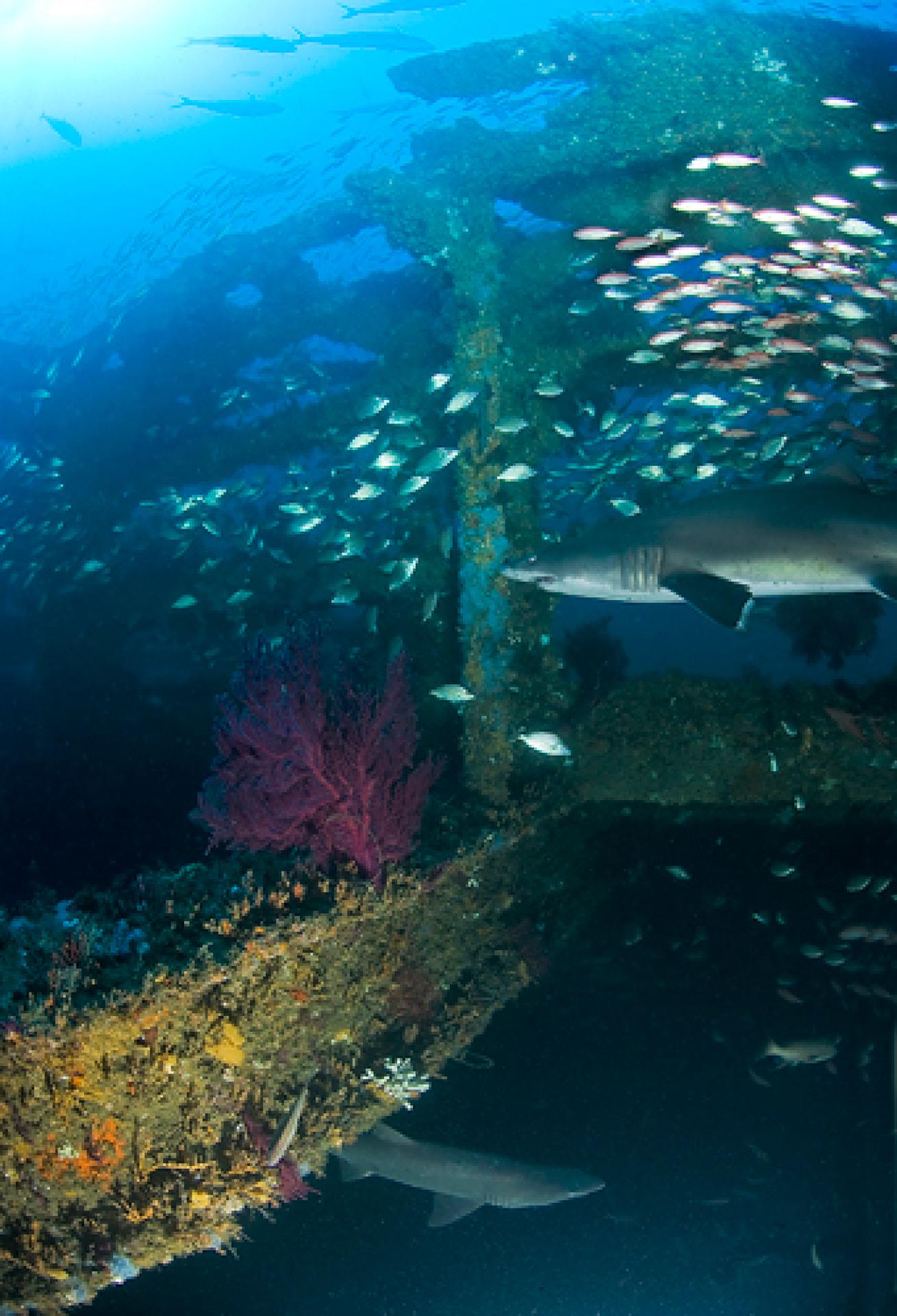
Michael Gerken
Another victim of a German U-boat attack, the 430-foot Atlas tanker was sunk on April 9, 1942, only a few miles from the wreck of the Caribsea in 115 feet of water. Like the Caribsea, the visibility on the Atlas can sometimes be less than 20 feet, but when the blue water rolls in this wreck site is a showstopper. Enormous sand tiger sharks at a whopping 10 feet in length can be seen patrolling the wreck by the dozen. The marine life is thick on this wreck and an opportunity to dive it should not be missed.
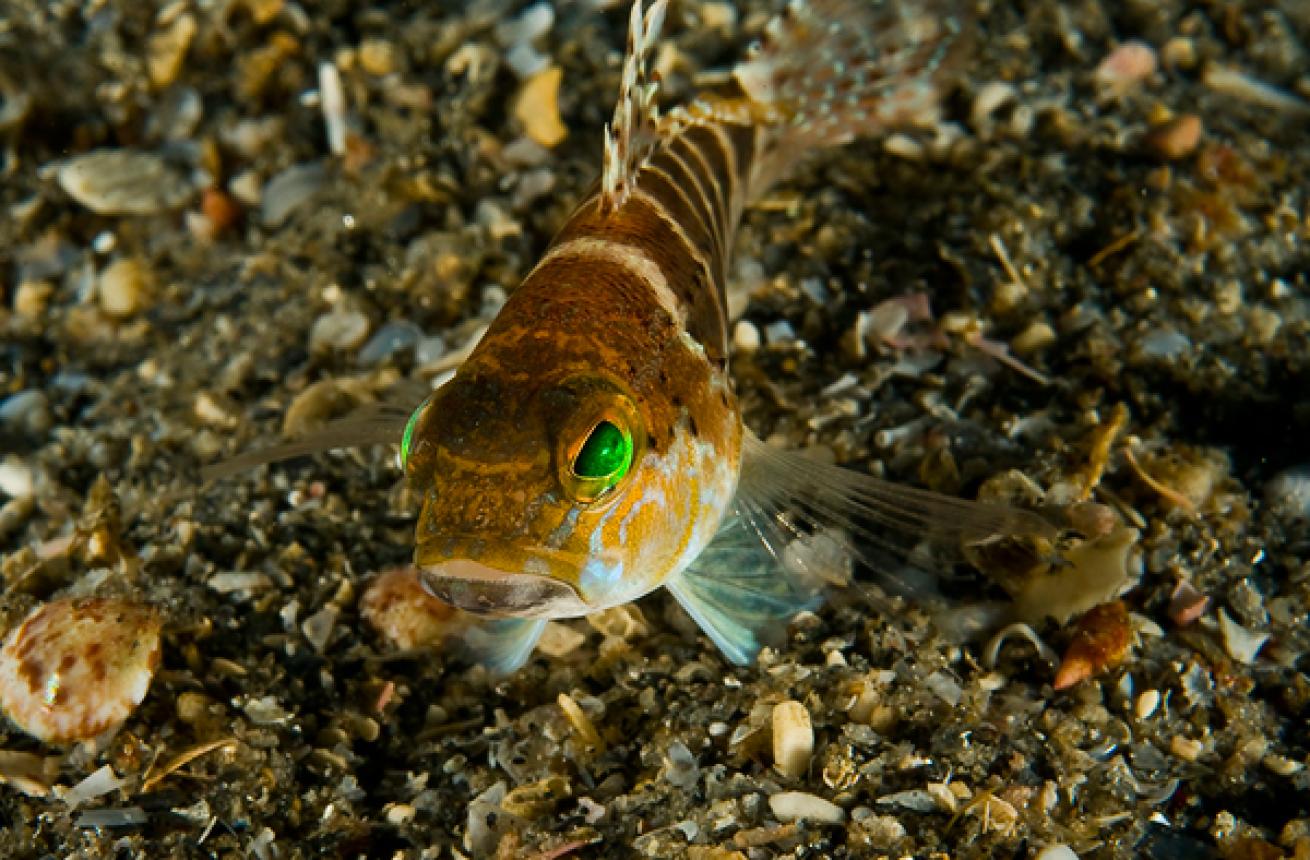
Michael GerkenUnknown fish
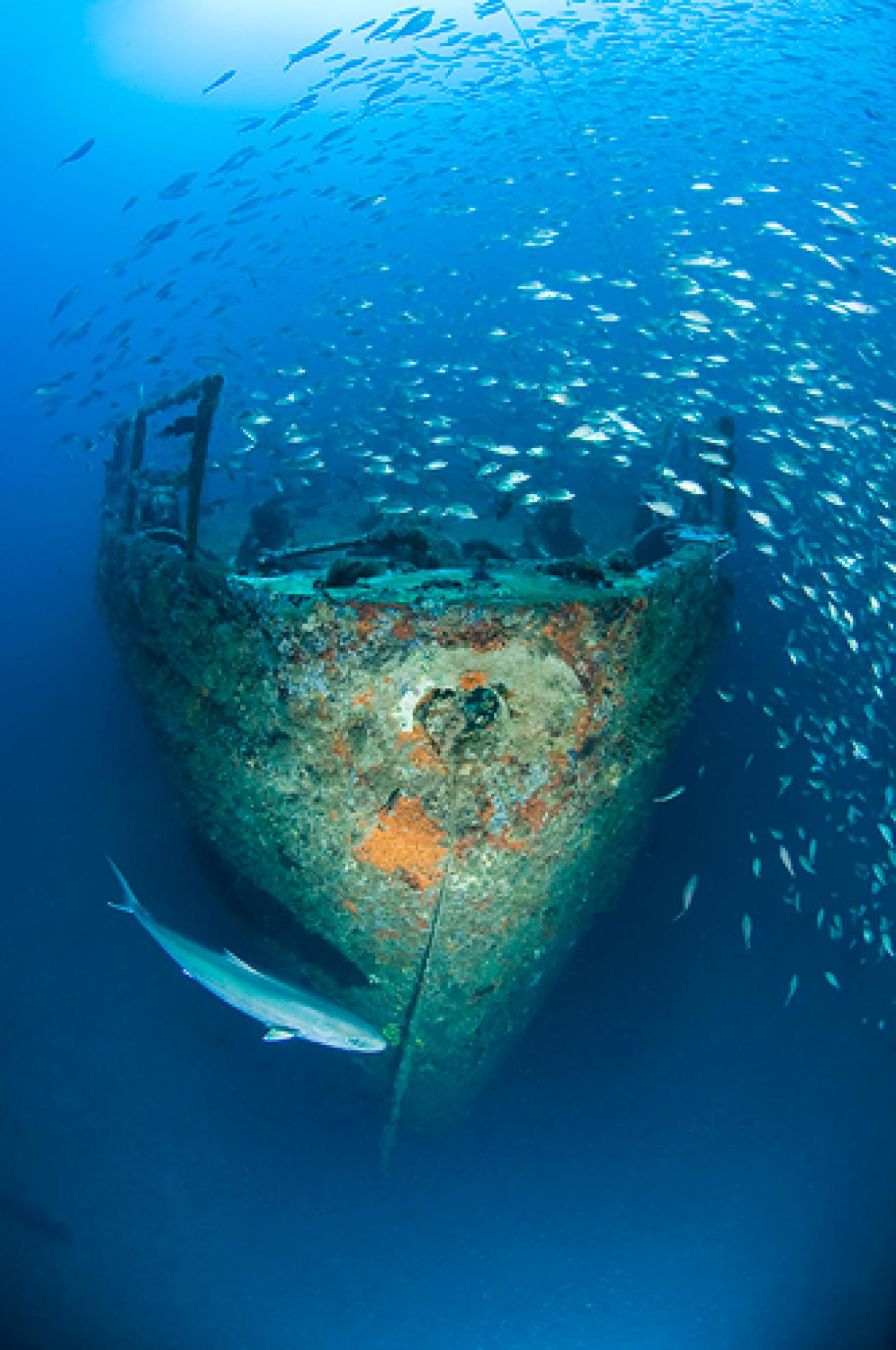
Michael Gerken
Not all the wrecks of North Carolina met their end due to tragic events. The USCG Cutter Spar is one of the many ships sent to the bottom as part of the North Carolina artificial reef project. The 180-foot buoy tender sits in 110 feet of water with a strong list to port. It has become very popular with scuba divers because it’s fully intact, easily navigable and a favorite hangout for sand tiger sharks, schools of Atlantic spadefish, the occasional giant southern stingray and greater amberjacks, shown here cruising the bow.
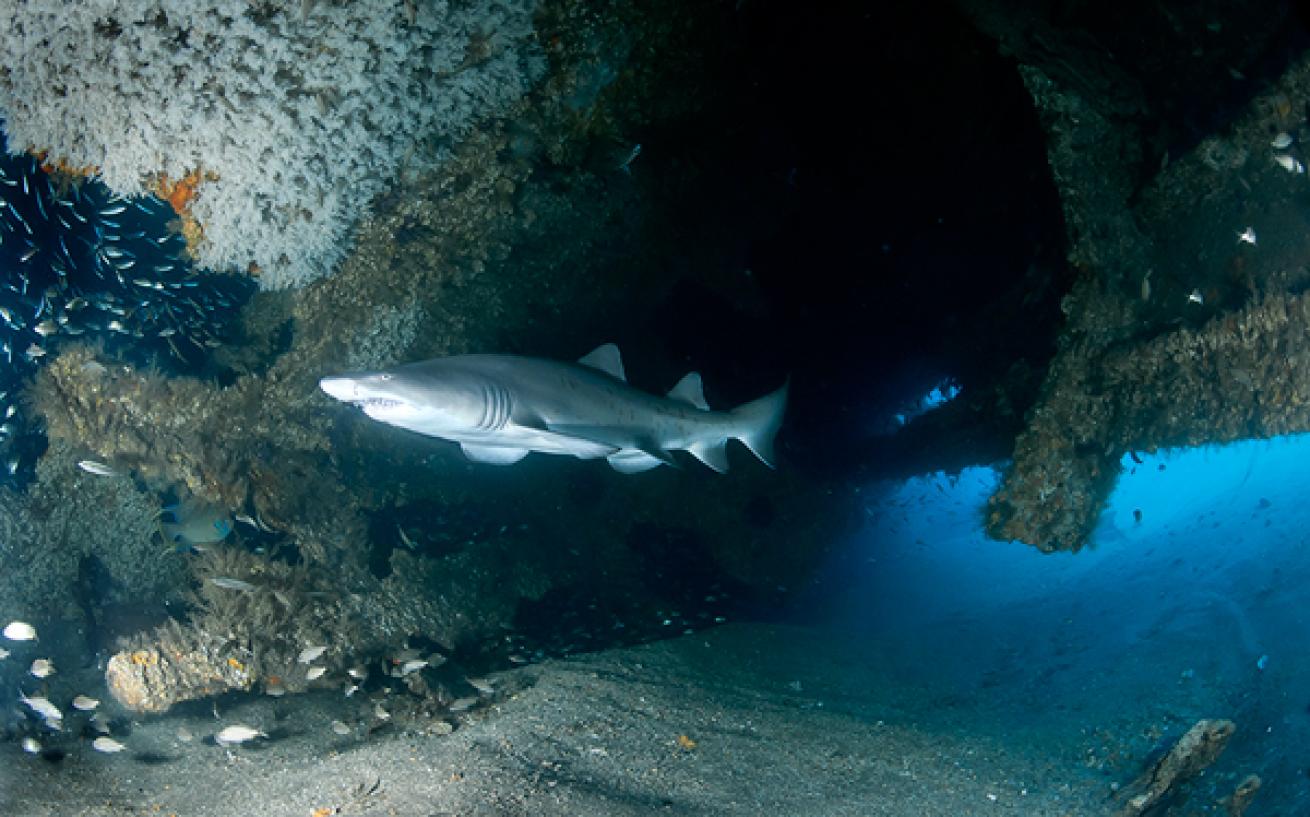
Michael Gerken
During the early stages of WWII, German U-boats wreaked havoc along the Eastern seaboard sinking numerous Allied merchant ships. In the confusion, the wreck of the W.E. Hutton was misidentified by the United States Navy and thought to be the wreck of the Papoose. Even though this mystery has been solved, most scuba divers still refer to the ‘Hutton’ as the Papoose. Here, a sand tiger shark lurks inside the shipwreck off the coast of North Carolina.
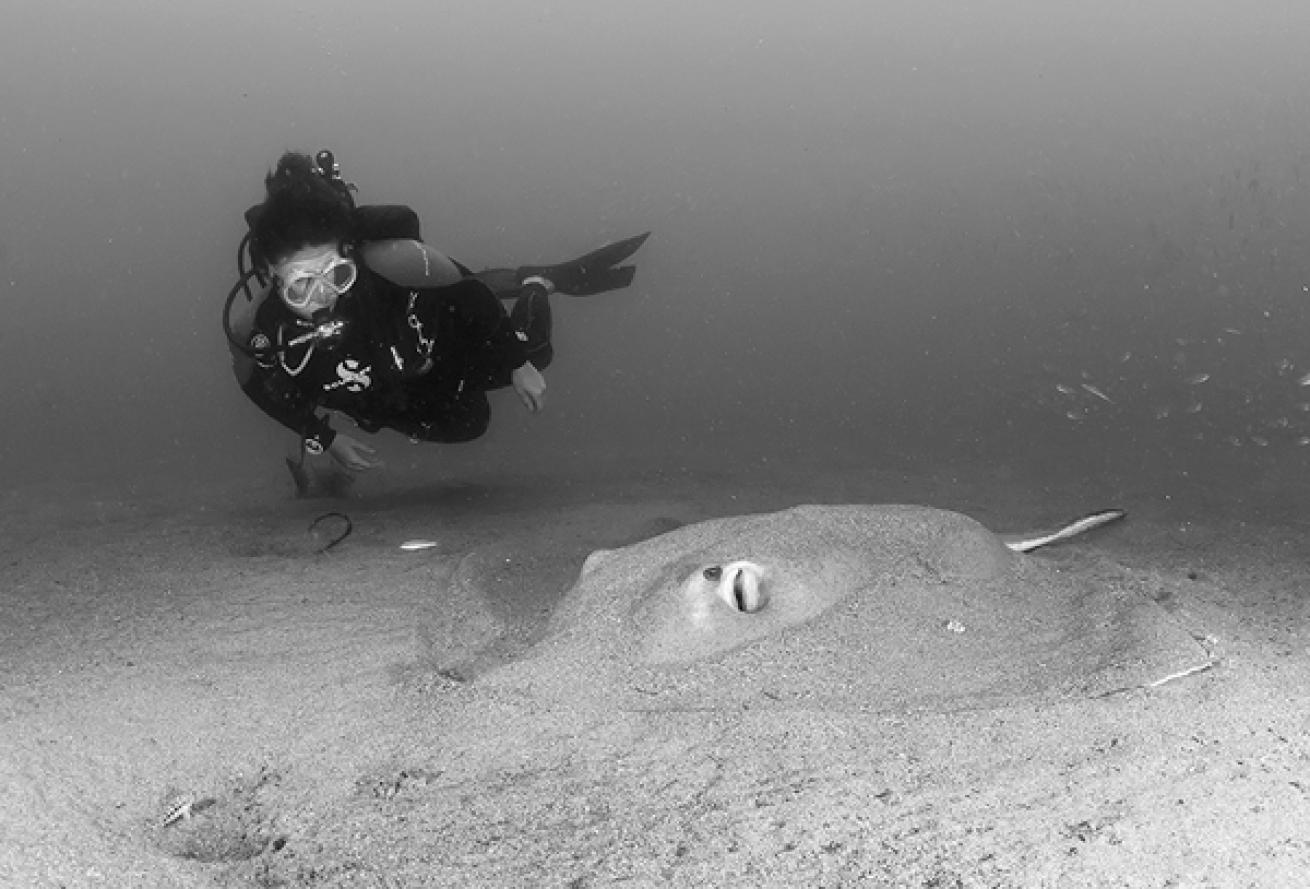
Michael GerkenDiver with a giant southern stingray
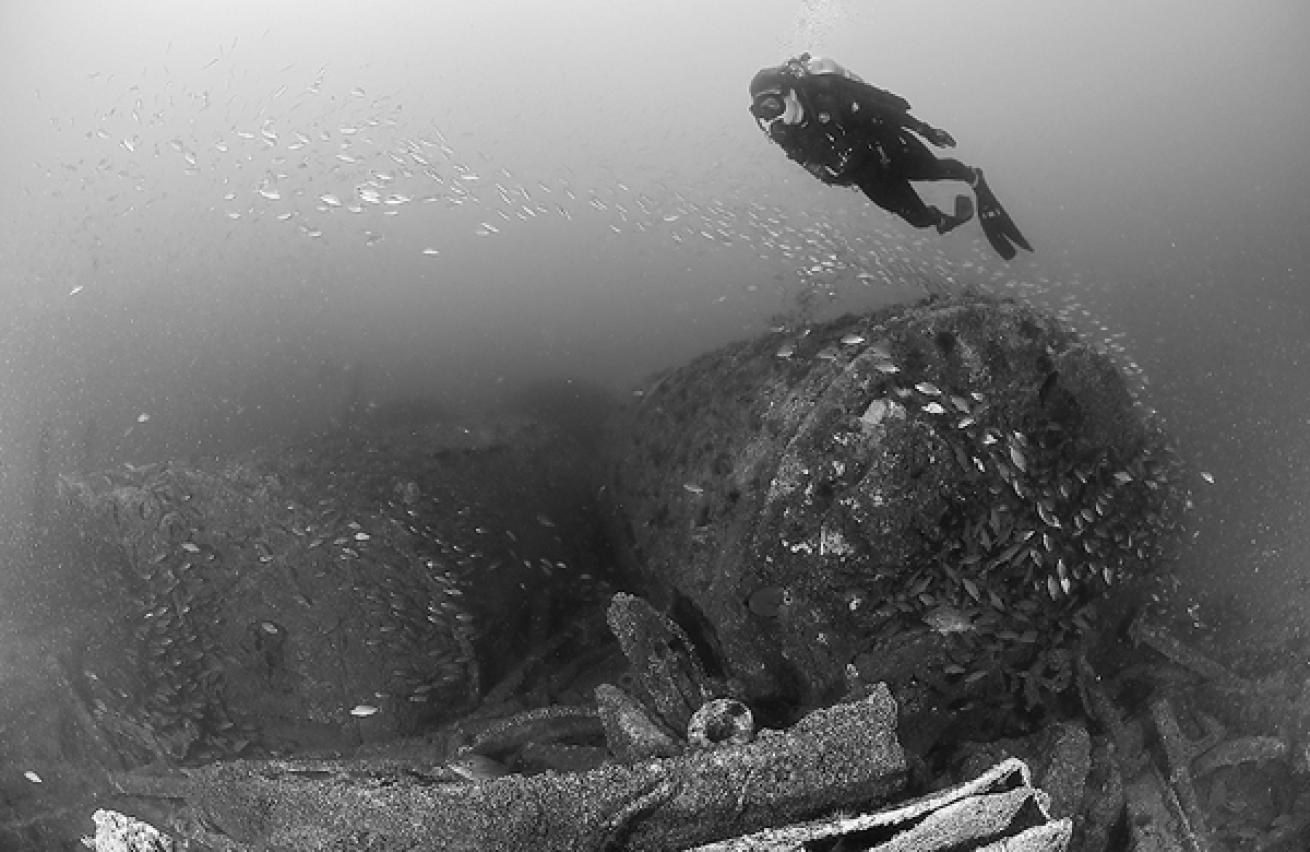
Michael GerkenThe captured World War I German gunship, the USS Schurz, is a classic North Carolina wreck dive. The 255-foot ship, sunk in 1918, was a a popular dive for those seeking to reclaim artifacts and take home a small piece of history, including brass portholes, crew personal effects and weapons. Today, it is illegal to take artifacts from the shipwreck, and most scuba divers are content to see the beautiful reef system with colorful sea fans, abundant marine life, dense schools of baitfish and the occasional shark. Here a diver investigates the boilers that remain.
During the early stages of WWII, German U-boats wreaked havoc along the Eastern seaboard sinking numerous Allied merchant ships. In the confusion, the wreck of the W.E. Hutton was misidentified by the United States Navy and thought to be the wreck of the Papoose. Even though this mystery has been solved, most scuba divers still refer to the ‘Hutton’ as the Papoose. Here, a sand tiger shark lurks inside the shipwreck off the coast of North Carolina.
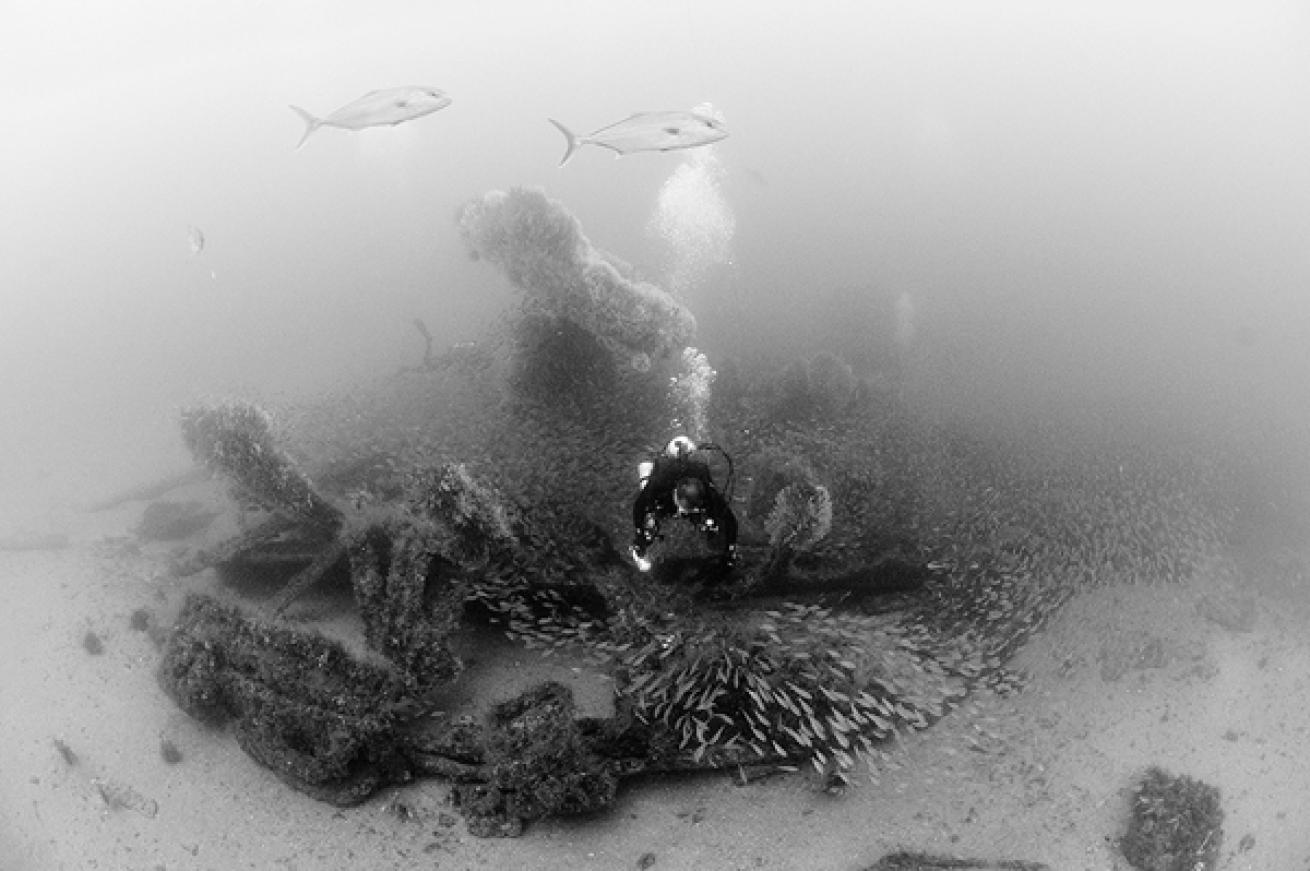
Michael Gerken
On March 23, 1942, the 411-foot Naeco went down in a fiery mess at the hands of yet another German U-boat attack in World War II. Today, the ship sits in two distinct pieces about a mile apart some 38 nautical miles due south of Morehead City. This wreck, which sits in an average of 140 feet, is as far offshore as dive boats will venture. With clear, warm Gulf Stream water being the standard conditions here, it appeals to those divers who don’t mind the deeper depths.
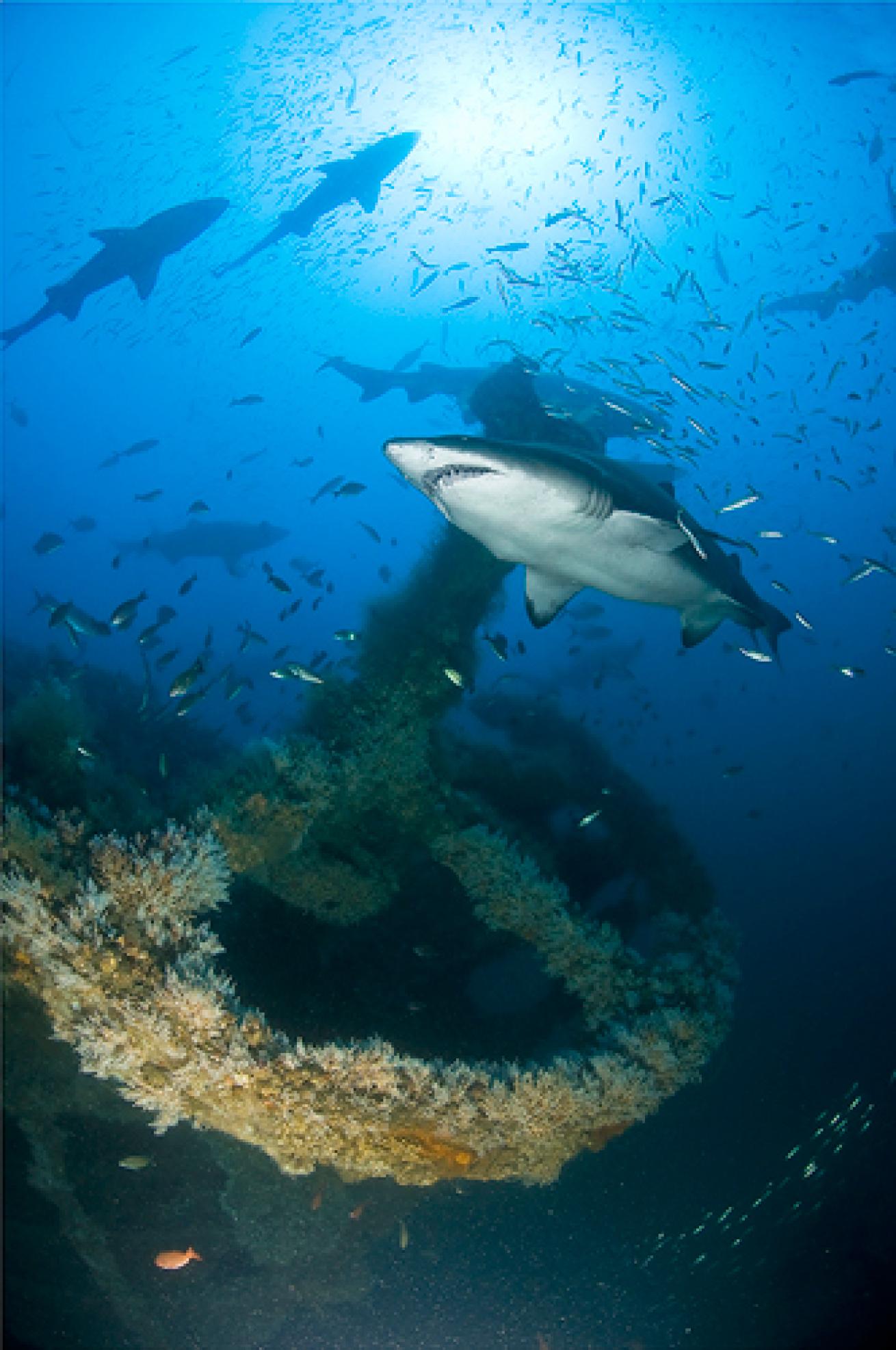
Michael Gerken
No top ten list for North Carolina would be complete without including this gem of a wreck. The 390-foot luxury steam liner, Proteus sunk on August 19, 1918, in a collision with the SS Cushing approximately 20 nautical miles south of Cape Hatteras. Mostly a low-lying debris field, with the exception of the prominent stern and propeller, she was popular dive for artifact hunters during the '80s and '90s. Today, it is a hot spot for shark sightings, vast numbers of grouper and big pelagic life, such as African pompano, giant amberjacks and barracudas. The added feature of the regular appearance of clear warm Gulf Stream water makes it an impressive dive.
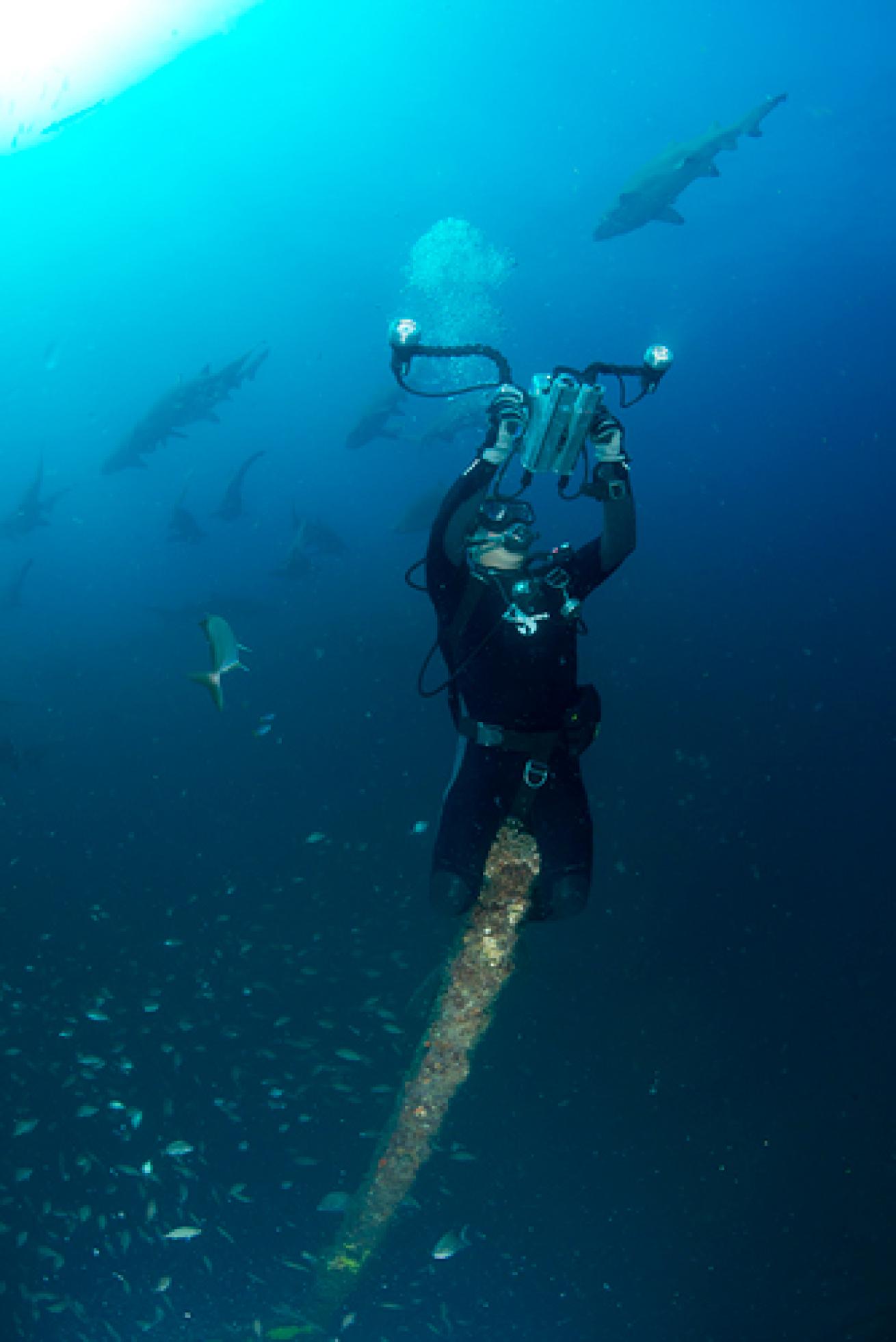
Michael Gerken
One of my personal favorites, the wreck of the Caribsea is one of those hit and miss dive sites. Notorious for low visibility conditions as well as large schools of sand tiger sharks, scuba divers can find this to be a top shelf experience when the Gulf Stream's blue water pushes in on rare days, exposing up to 100 sand tiger sharks in one spot. Scientists believe they aggregate here during the summer months to mate.
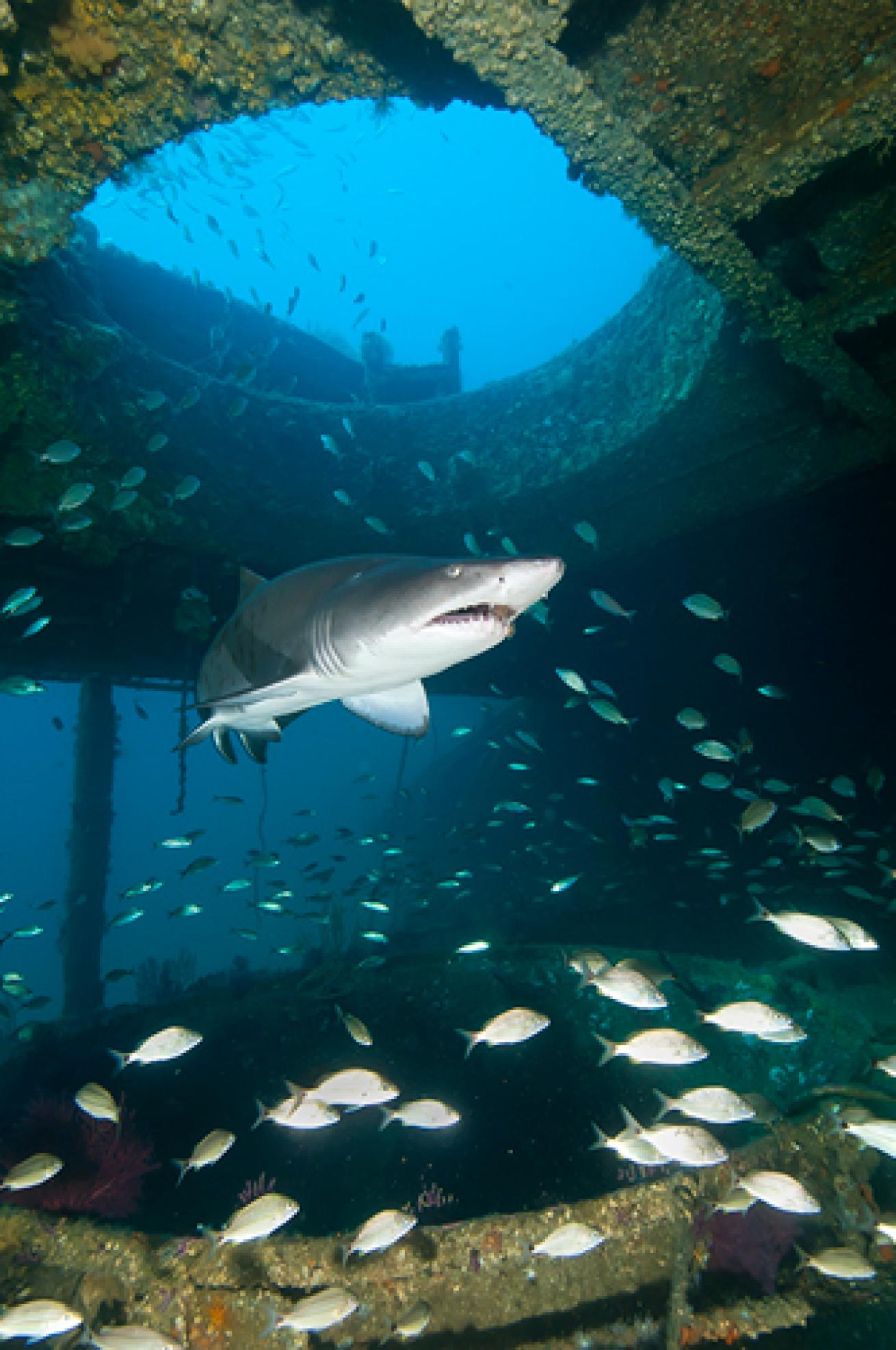
Michael Gerken
During the 2012 dive season, the Aeolus became home to approximately a dozen sand tiger sharks that took up residence inside the wreck. Divers returned day after day to swim right amongst the sharks in what became known as ‘Club Aeolus,’ North Carolina’s coolest shark lounge.
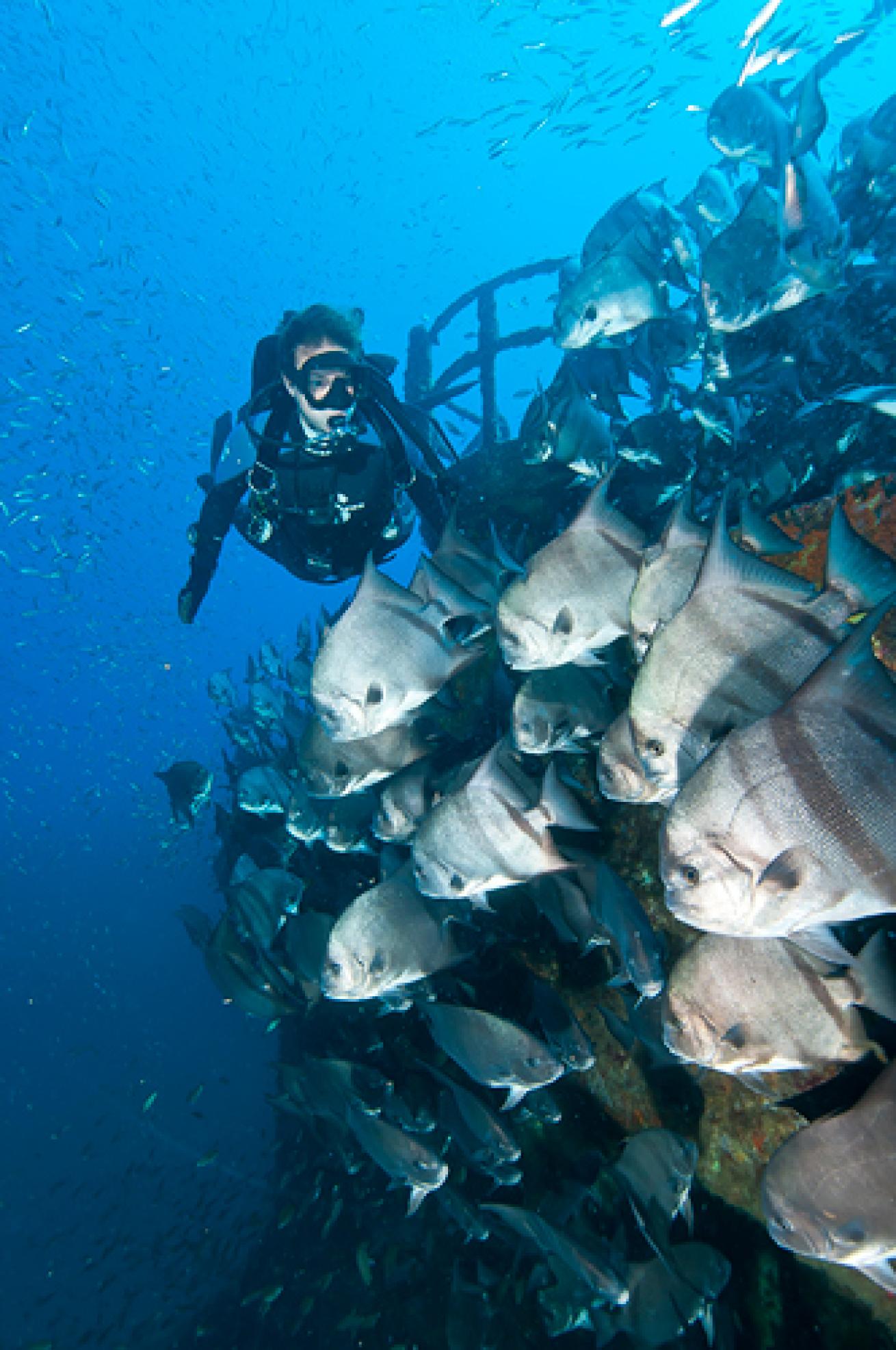
Michael Gerken
The Spar offers wreck-loving scuba divers lots of external features to explore, including a crane, an intact propeller and rudder and more. The prolific marine life that populates the wreck, like this school of Atlantic spadefish, share the attraction.
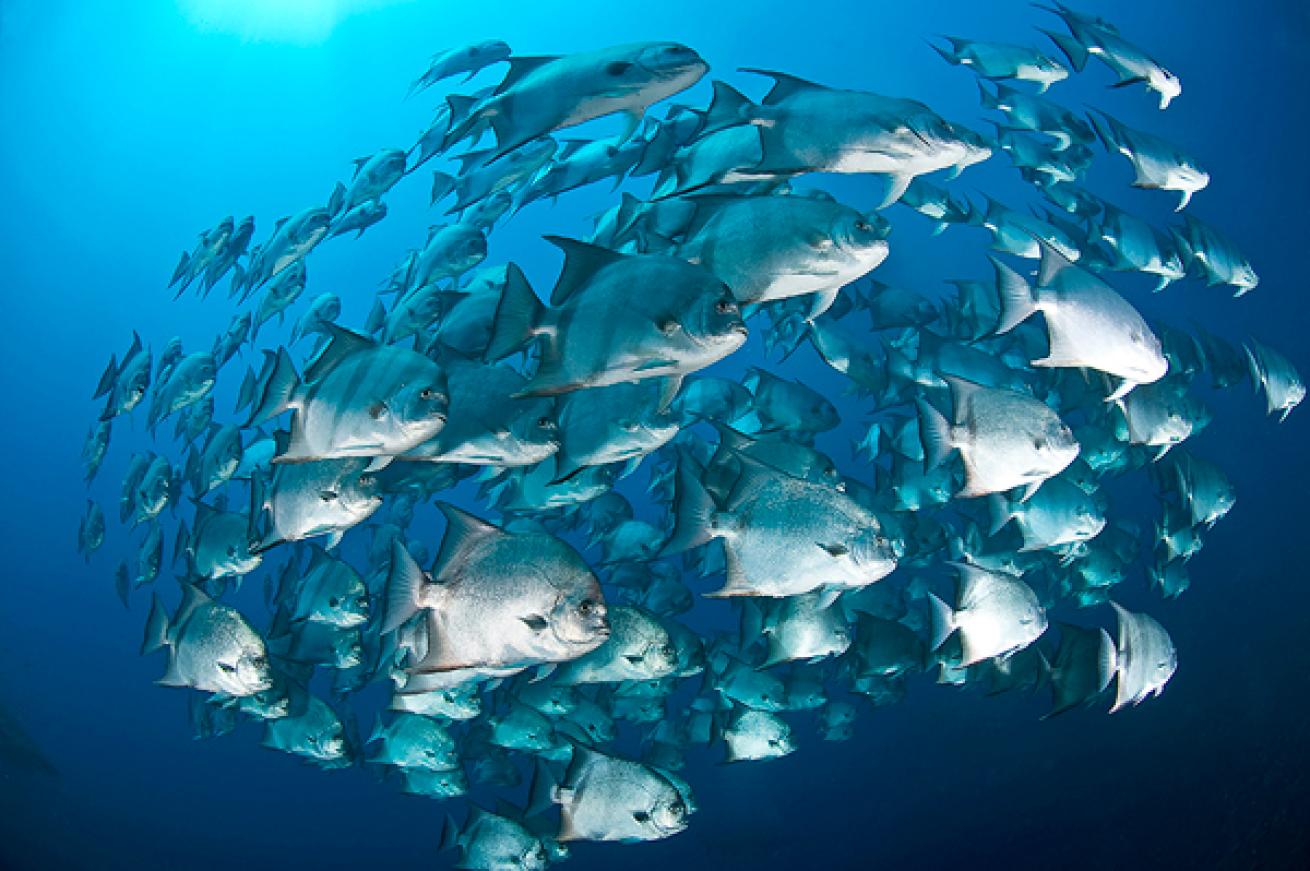
Michael Gerken
Schools of Atlantic spadefish can number in the dozens and create fantastic subjects for underwater photographers.
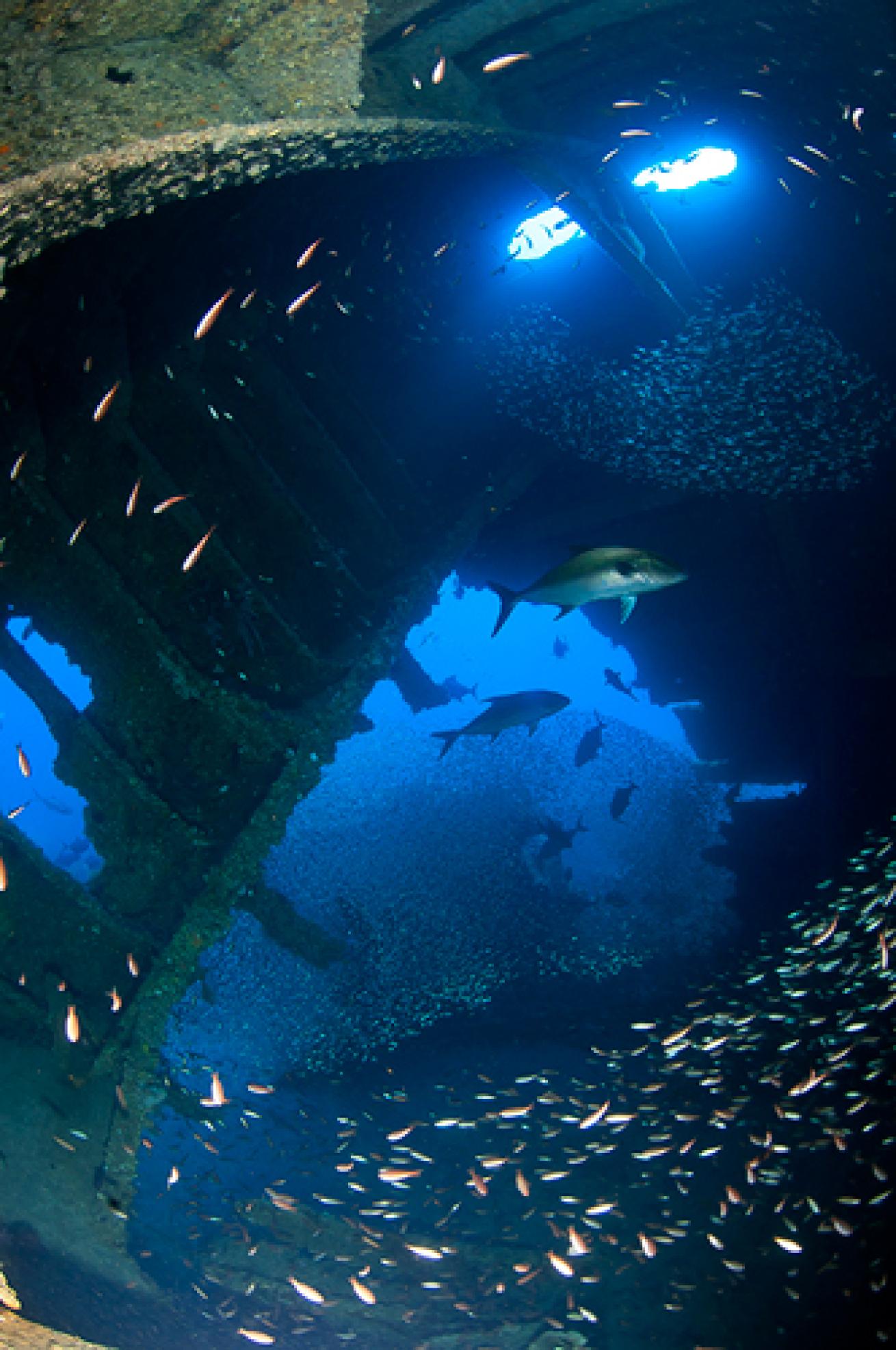
Michael Gerken
The wreck of the Papoose has a convoluted history since in actuality it is the wreck W.E. Hutton. Sitting upside down in 120 feet of water, the 435-foot tanker attracts a plethora of marine life that includes the sand tiger sharks that are seen here with regularity. And because it rests nearly 36 nautical miles from shore in the clear waters of the Gulf Stream, 100 foot of visibility is not unheard of. This interior view of the wreck shows why it's a favorite of scuba diver visiting the North Carolina coast
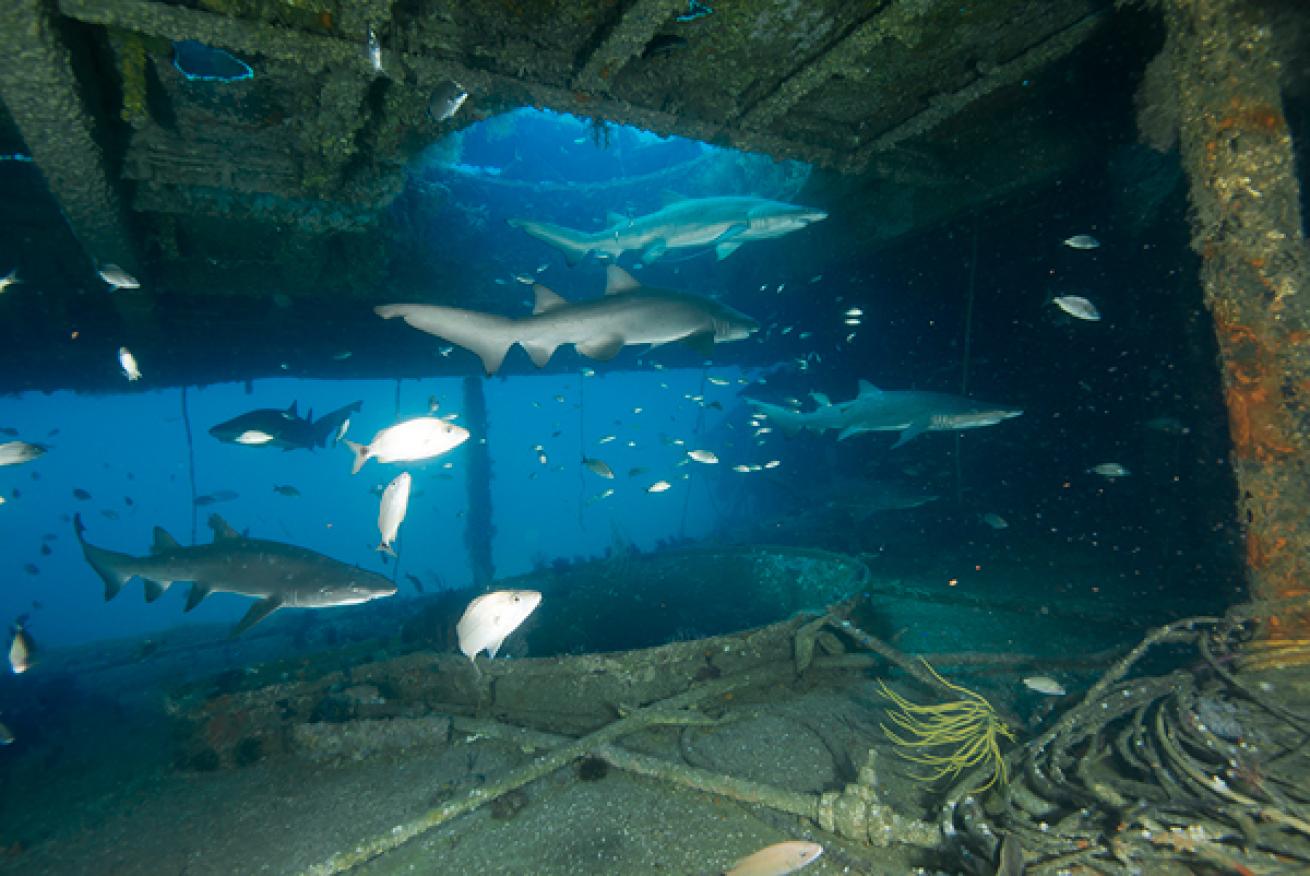
Michael Gerken
The Aeolus is another one of North Carolina’s popular wrecks that was sunk as part of the artificial reef program and only a few hundred feet from the wreck of the Spar. This 400-foot wreck sits in 110 feet of water and was split in two during a powerful hurricane that swept through the region in the 1990s. During the 2012 dive season, the Aeolus became home to approximately a dozen sand tiger sharks that took up residence inside the wreck. Divers returned day after day to swim right amongst the sharks in what became known as "Club Aeolus," North Carolina’s coolest shark lounge.
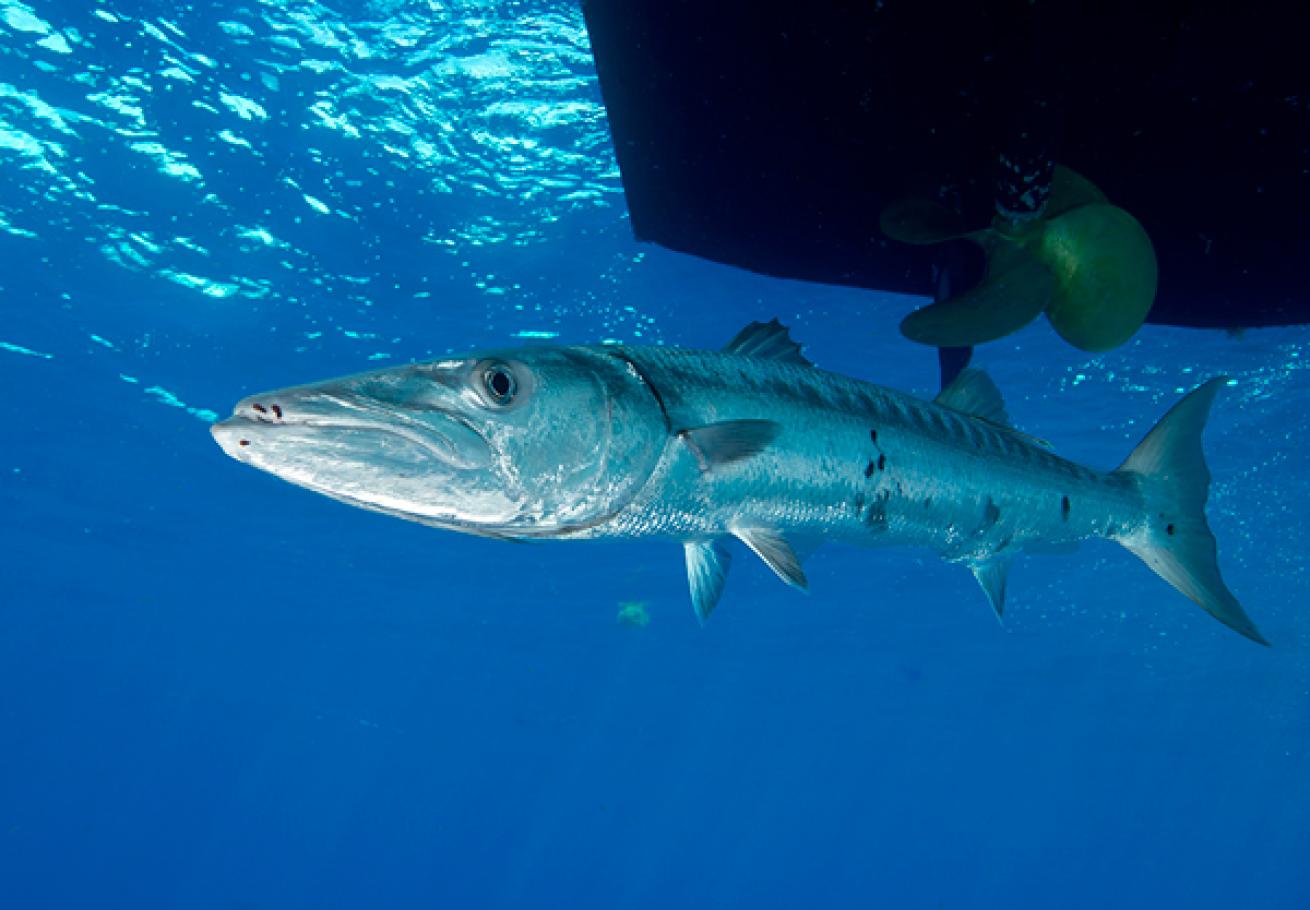
Michael Gerken
Barracuda are sturdy, opportunistic predators that are common to the waters of North Carolina's Outer Banks.
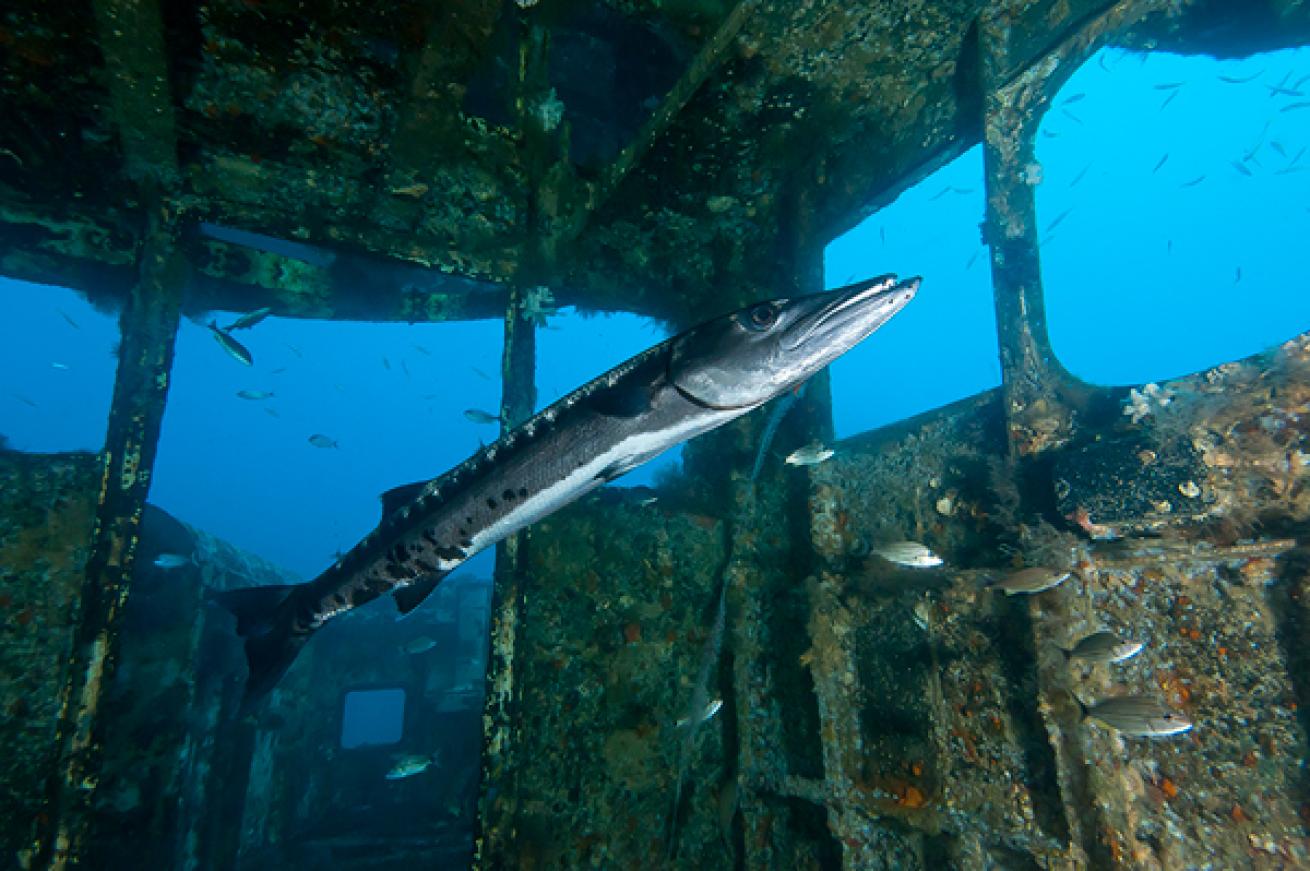
Michael Gerken
Amazingly, the Spar was moved 200 feet from her original location and rolled over on her port side when Hurricane Irene struck the coast in August 2011. She weathered the storm intact, though — a tough little ship. Barracuda, shown here, are frequenly seen by scuba divers venturing into the wheelhouse of this popular North Carolina shipwreck.
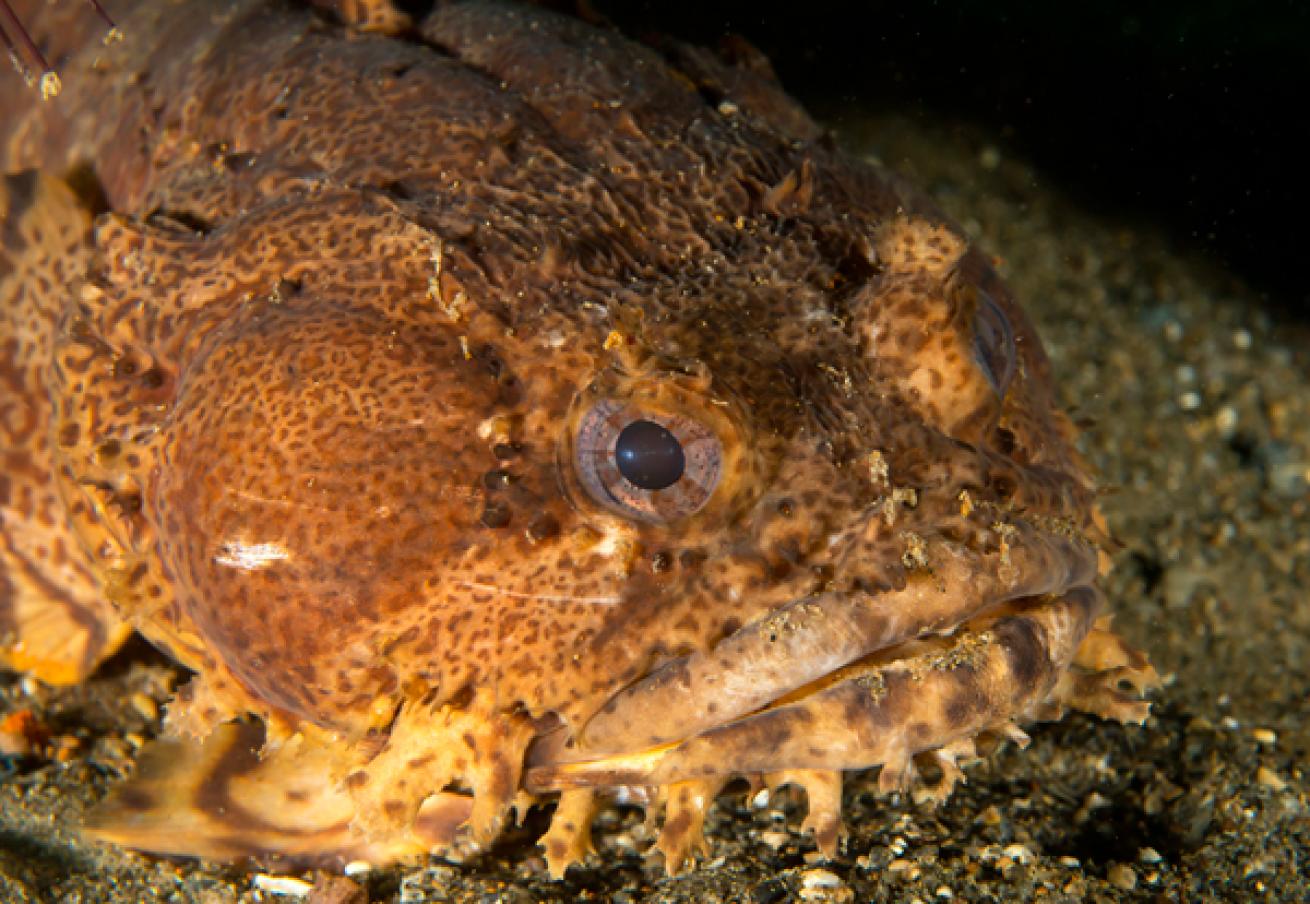
Michael Gerken
Oyster toadfish, masters of camoflage, lie motionless in wait for unwitting prey.
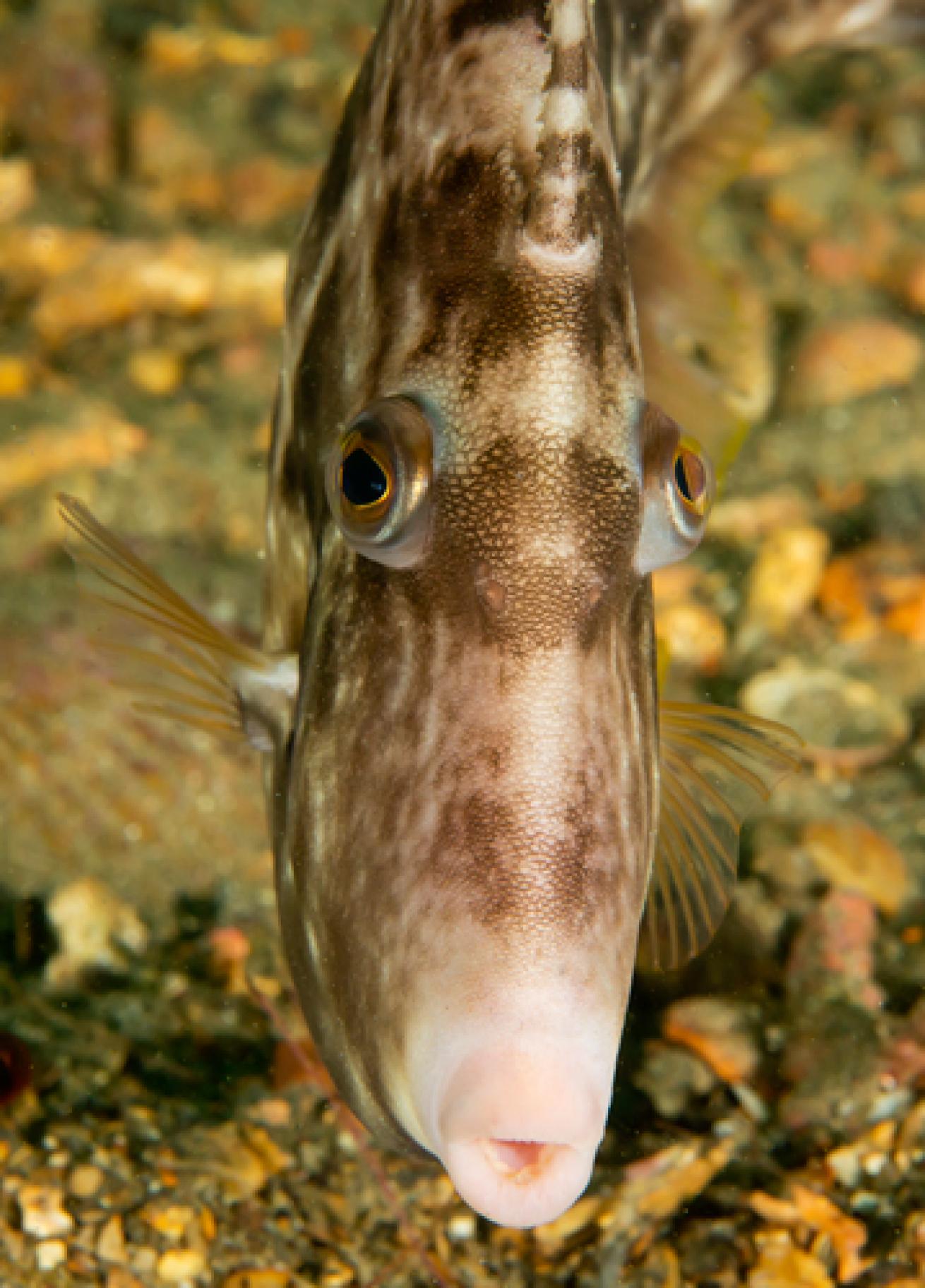
Michael Gerken
Filefish are a common marine life sighting for scuba divers on North Carolina's shipwrecks
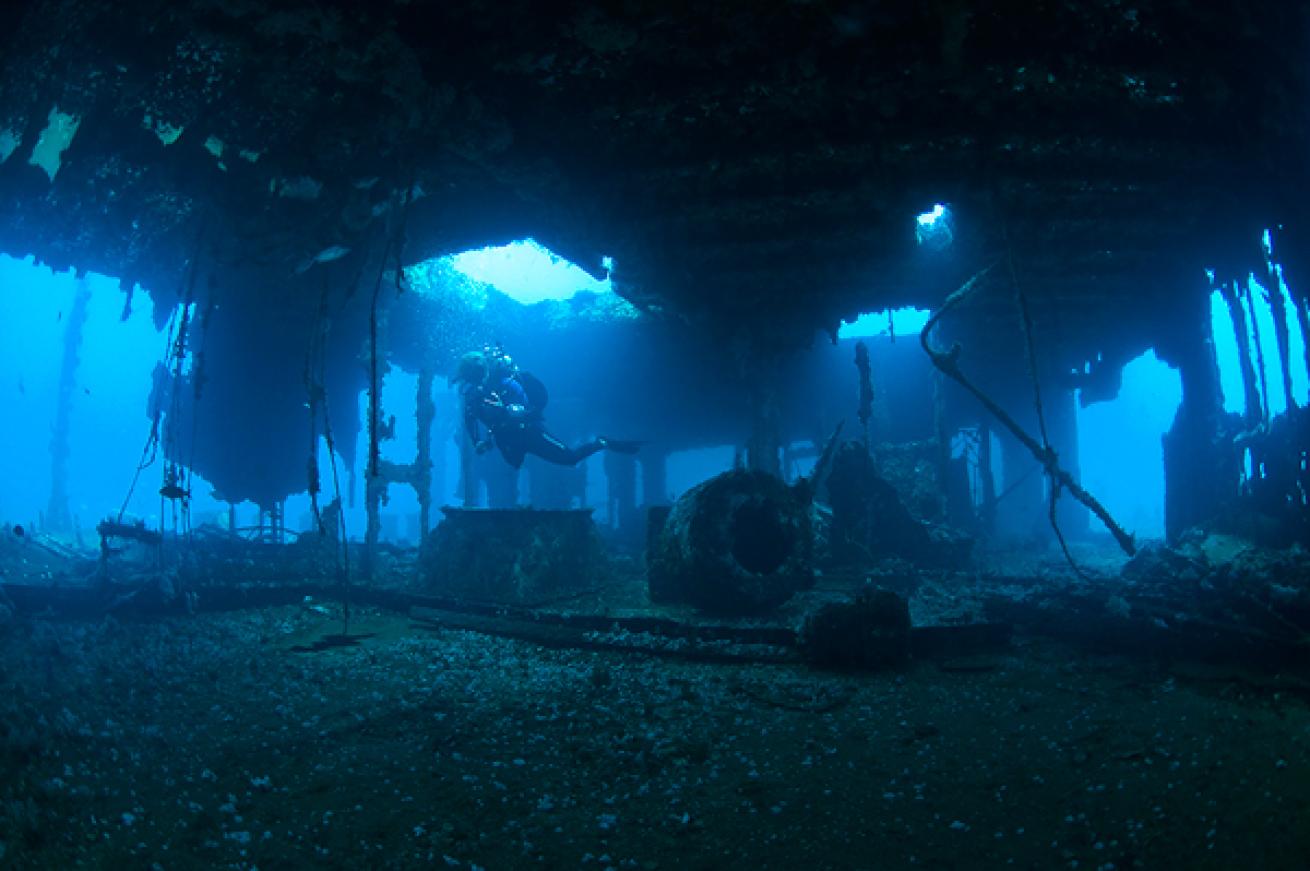
Michael Gerken
The wreck of the USS Indra has many humorous aliases, such as the Indra Maru after the famed Japanese wrecks of Truk Lagoon, or the Indra Doria after the Mount Everest of wreck dives, the_ Andrea Doria._ This 330-foot landing craft was sunk in 60 feet of water only 10 miles from Beaufort Inlet as part of the North Carolina artificial reef program. Since the 1990s she has been visited by more divers probably then any other wreck off the Outer Banks. Because she is partially intact, sitting upright and within close proximity to Morehead City, she attracts both novice and advanced divers, alike. Whatever you call the ”Indra,” she is a legendary wreck site in her own right.
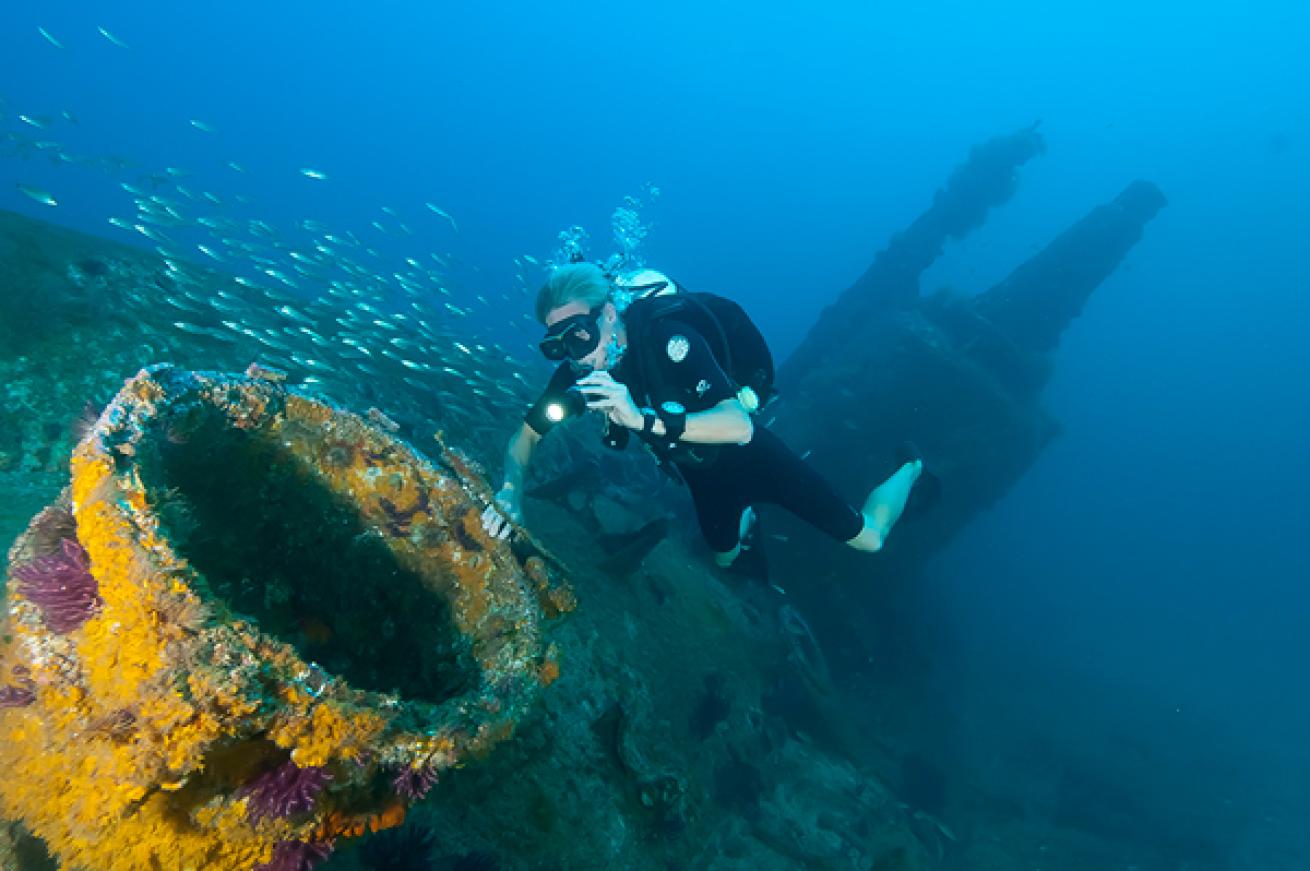
Michael Gerken
Without a doubt, one of the biggest draws to the Outer Banks is the opportunity to dive on this historic World War II German U-boat. Sitting with a 45-degree list to starboard and her conning tower intact, the U-352 fascinates scuba divers and strikes at their imagination when they get a glimpse of a this amazing piece of history. Here a visitor peers into a hatch on the forward deck of the sunken relic.
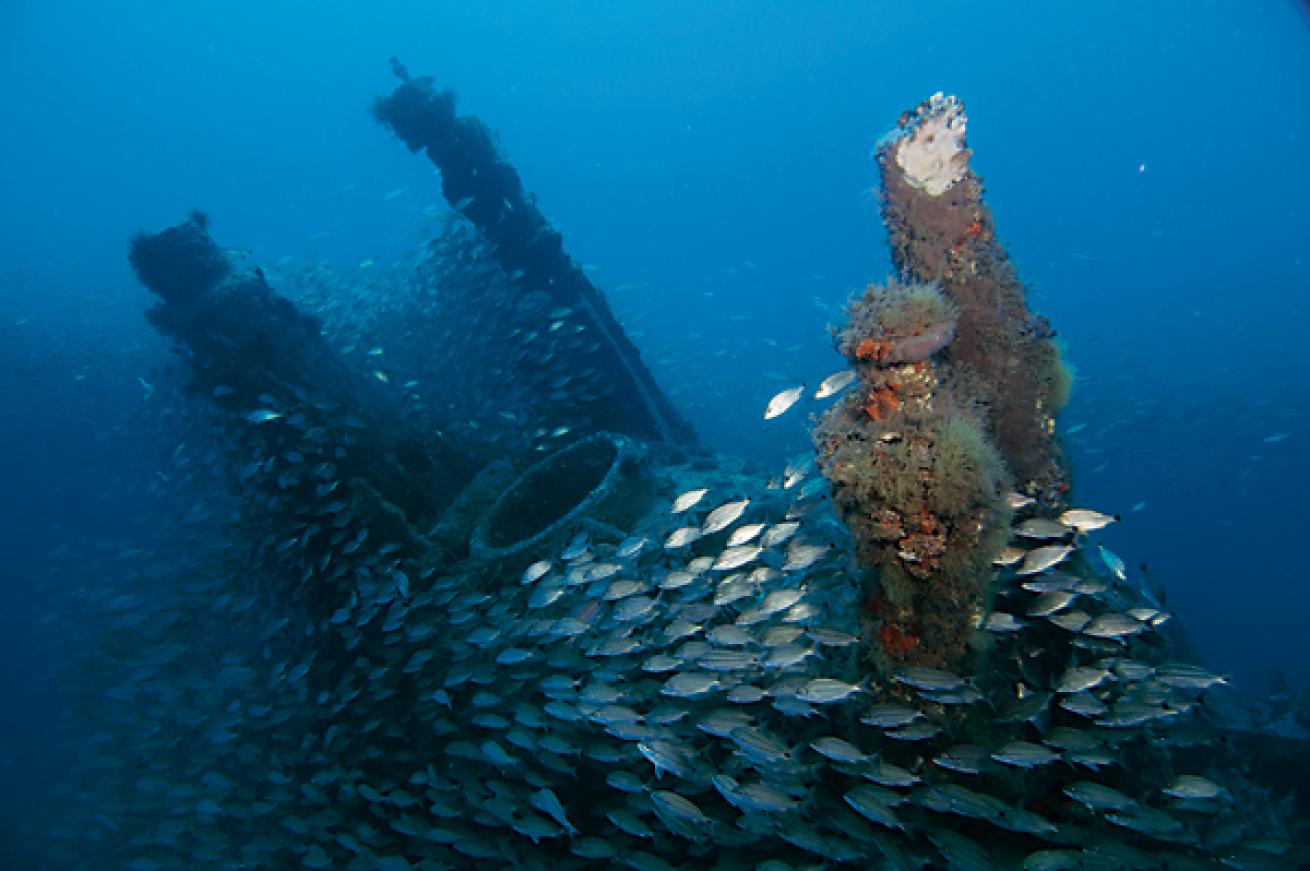
Chris WalkerU-352 is a magnet for marine life.
The Outer Limits
Does North Carolina have the best wreck diving in America?
Hovering in a gentle current, marine life is thick all around the wreck of the Aeolus. Feisty jacks, frantic tunnies and numerous other menacing predators patrol the perimeter of the wreck in pursuit of frenzied baitfish. A crew of hulking barracudas loiters around in midwater like thugs on a street corner, while from a safe distance, countless weary groupers mill about on the bottom trying to make sense of the noisy invader. The spectacle grows only more intense as I discover a dozen or more sand tiger sharks inside the wreck. They show no fear as I approach. With the exception of my camera trigger finger firing off photographs, I remain motionless under the top deck of the wreck while the sharks swim around and around within arms’ reach. One after another, they bump in to my dome port with menacing ragged teeth bared. Even the repetitive bursts from my strobes won’t startle them. The subject matter is perfect, and scoring great images comes easy — just another banner dive day on the Outer Banks.
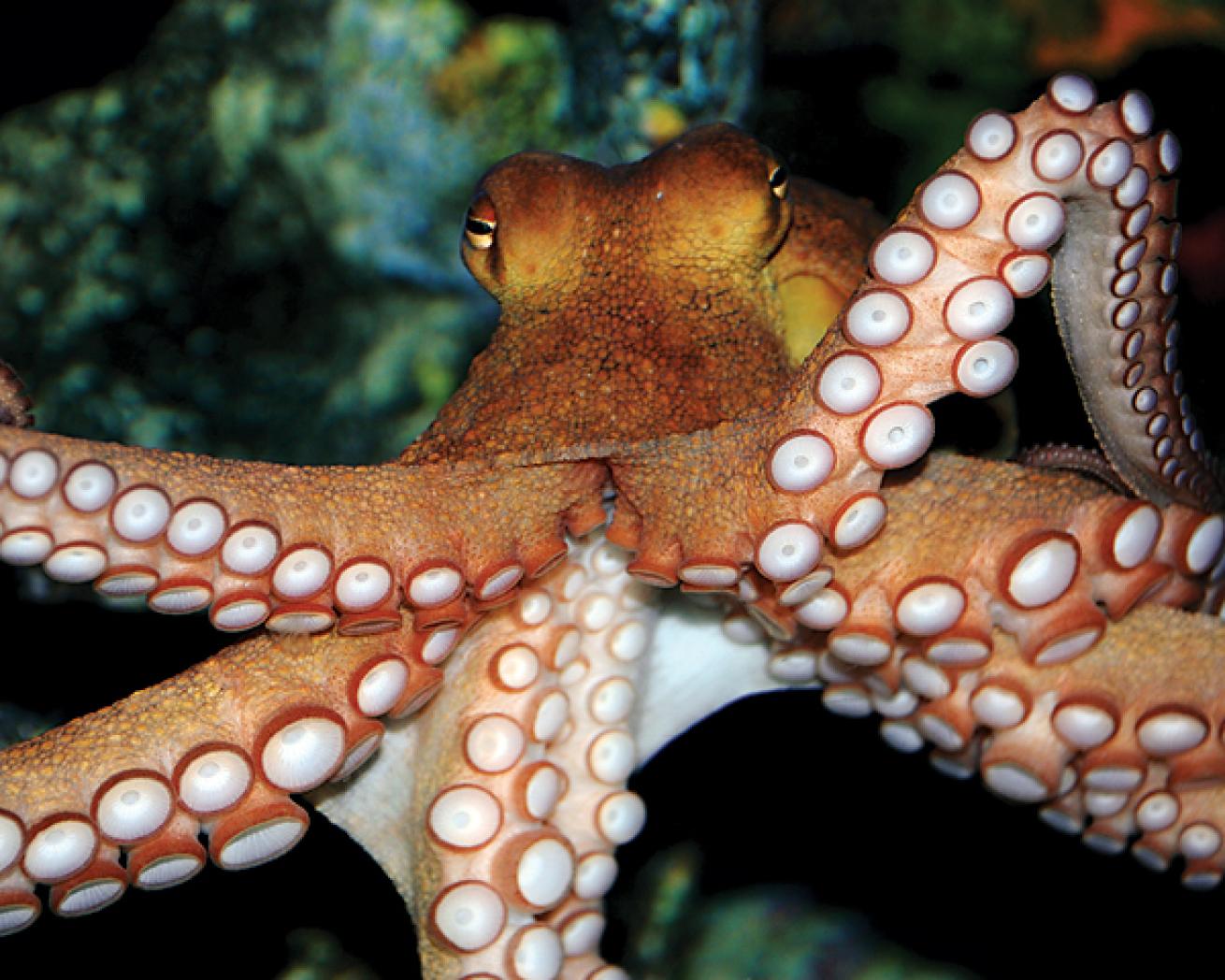
Courtesy of NC Aquarium at Pine Knoll ShoresPine Knoll Shores Aquarium Octopus
As long as ships have sailed across the Atlantic, they have found their way to the Outer Banks of North Carolina. But the 150 miles of beautiful barrier islands were not a welcomed site for some of these intrepid vessels. Many met their doom here, victims of hazardous shoals, rough waters, German U-boat attacks or simple human error. The tragic irony is how these sunken ships have now become a haven for divers who visit here to explore the remains that inhabits them.
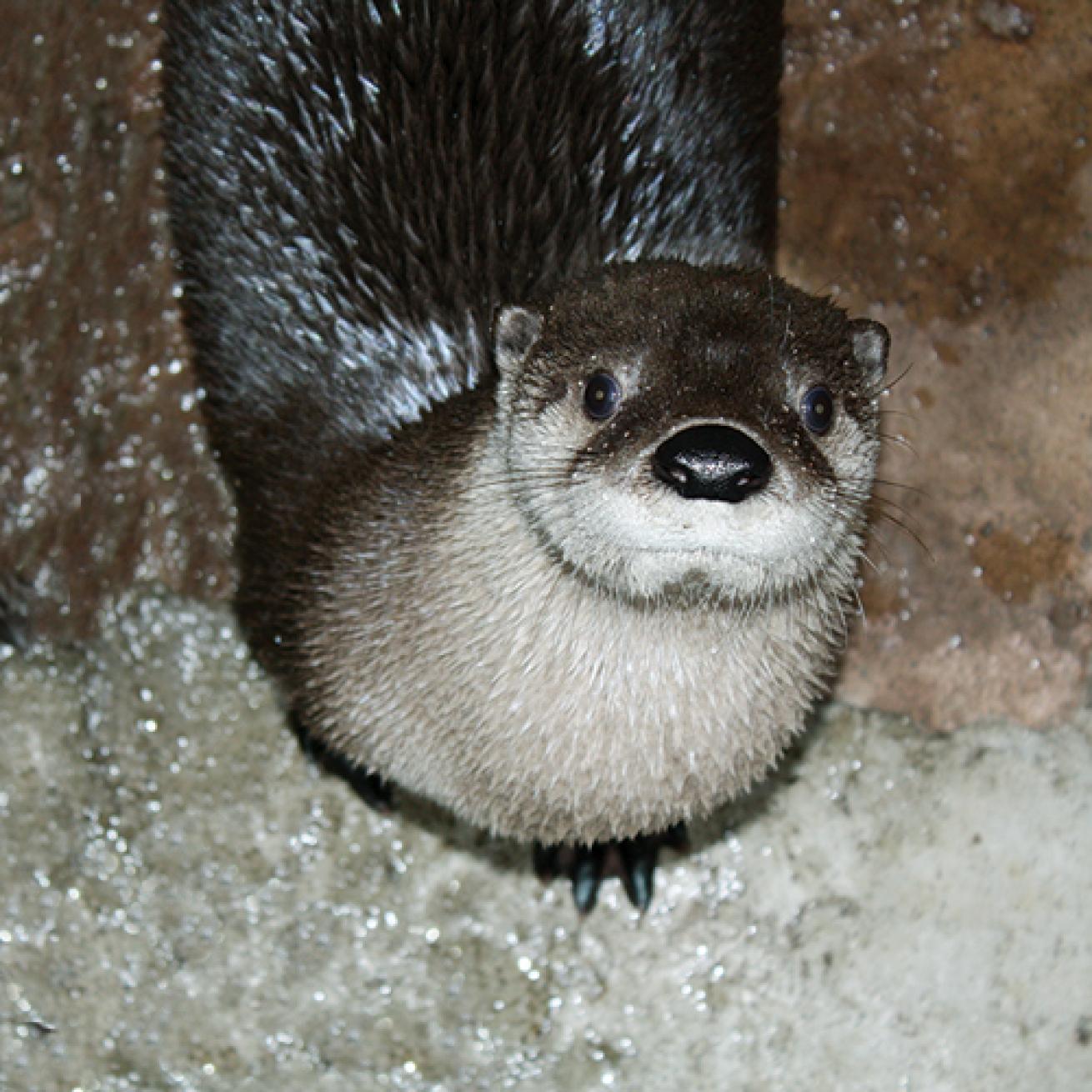
Courtesy of NC Aquarium at Pine Knoll ShoresOtter: Pine Knoll Shores Aquarium, NC
Diving the wrecks of North Carolina can require patience at times due to occasional heavy winds and strong currents that create challenging conditions, and sometimes keep dive boats tied to the dock. The one- to two-hour passage offshore into the Atlantic can be tough on those who lack the seasoned stomach for open-ocean travel. And because average depths run around 110 feet, novice divers might be intimidated. But there are some fantastic inshore wreck sites that sit in only 60 feet of water that have entertained beginners for years, and with the bonus of a much shorter boat ride. These shallow wrecks are also great for conducting training dives and building up skills and confidence to venture offshore to the deeper wreck sites with stronger currents. And when the warm clear waters of the Gulf Stream push farther north and closer to the coast during the summer months, dive conditions can verge on tropical, with water temperatures reaching the low 80s on the surface, and visibility sometimes exceeding 100 feet. To those who frequent the region, the challenges of the Outer Banks is a rite of passage, and well worth the access to these world class wrecks. Because on any given day, an offshore dive here can produce a once in- a-lifetime underwater experience. In other words, when it’s good, it’s awesome and worth every effort.
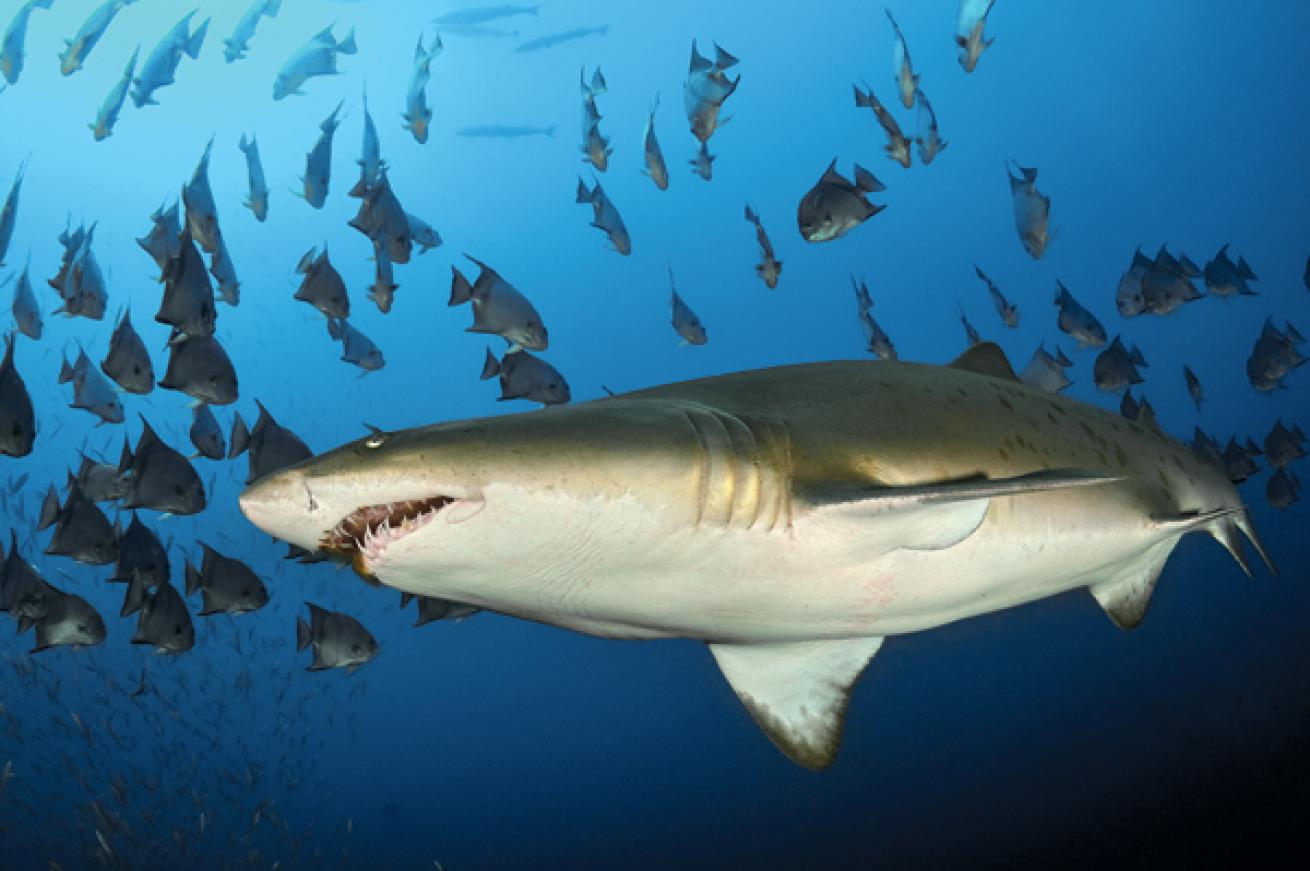
Scott JohnsonUSCG Cutter Spar
Five Top Wrecks
1. U-352
Without a doubt, one of the biggest draws to the Outer Banks is the opportunity to dive on this historic World War II German U-boat. On May 9, 1942, the U-352 was cruising close to the North Carolina coast when it picked a fight with the wrong ship. The scrappy USCG Cutter Icarus was on its game that day when the U-352 opened fired with torpedoes and missed. In retaliation, the Icarus launched depth charges and sunk the U-352 in 110 feet of water, 28 nautical miles south of Morehead City. Thirteen men perished in the attack, while 33 survivors were picked up by the Icarus and returned to Charleston where they spent the rest of the war as prisoners. Sitting with a 45-degree list to starboard and its conning tower intact, the U-352 fascinates divers when they get a glimpse of this amazing piece of history.
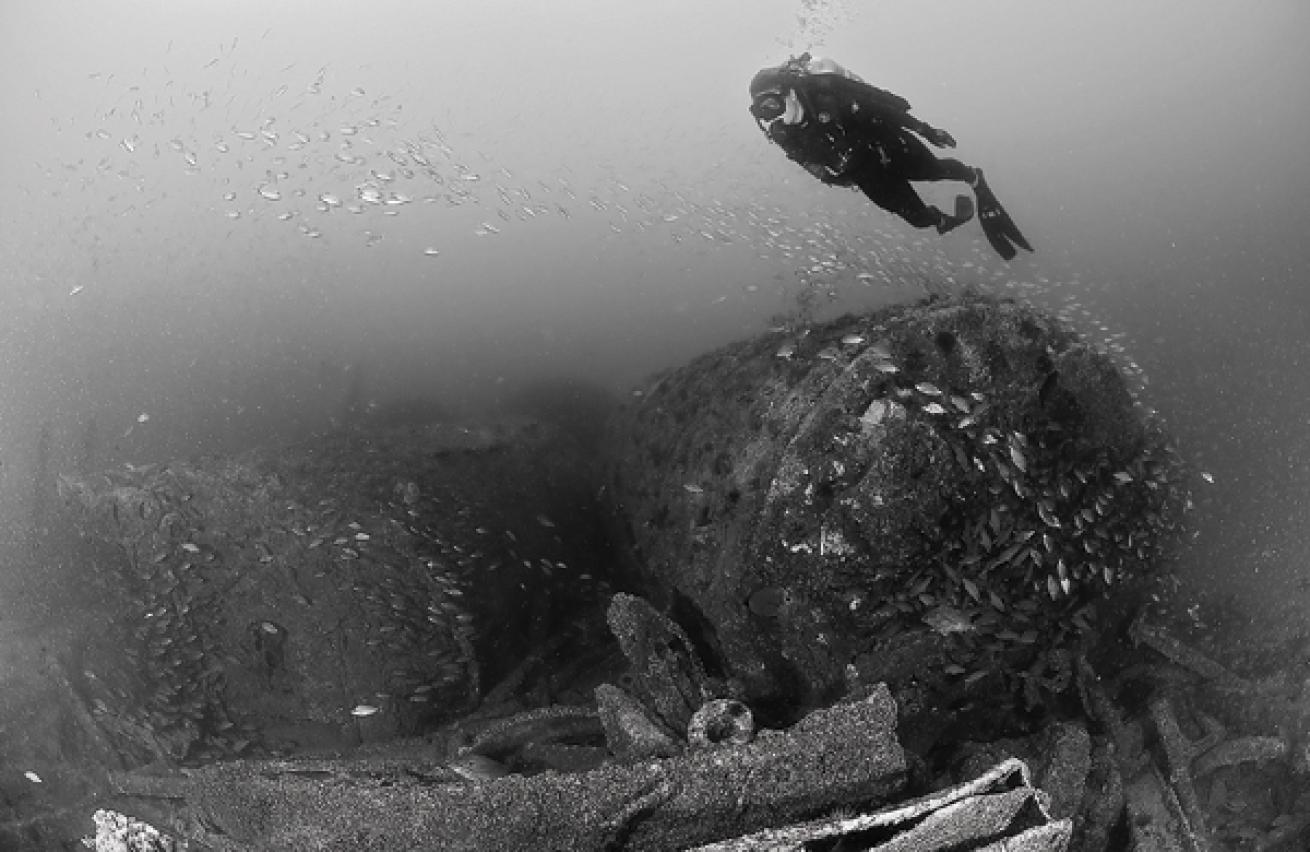
Michael GerkenGiant boilers remain on the wreck of the USS Schurz
2. Papoose
The wreck of the Papoose has a convoluted history since, in actuality, it is the wreck of the W.E. Hutton. During the early stages of WWII, German U-boats wreaked havoc along the Eastern seaboard, sinking numerous Allied merchant ships. In the confusion, the wreck of the W.E. Hutton was misidentified by the U.S. Navy to be the wreck of the Papoose. Even though this mystery has been solved, most still refer to the Hutton as the Papoose. Sitting upside down in 120 feet of water, the 435-foot tanker is a favorite to many divers who come to see the plethora of marine life, which includes the sand tiger sharks that are seen here with regularity. Resting nearly 36 nautical miles from shore, its popularity is increased due to the clear waters of the Gulf Stream; 100 foot of visibility is not uncommon.
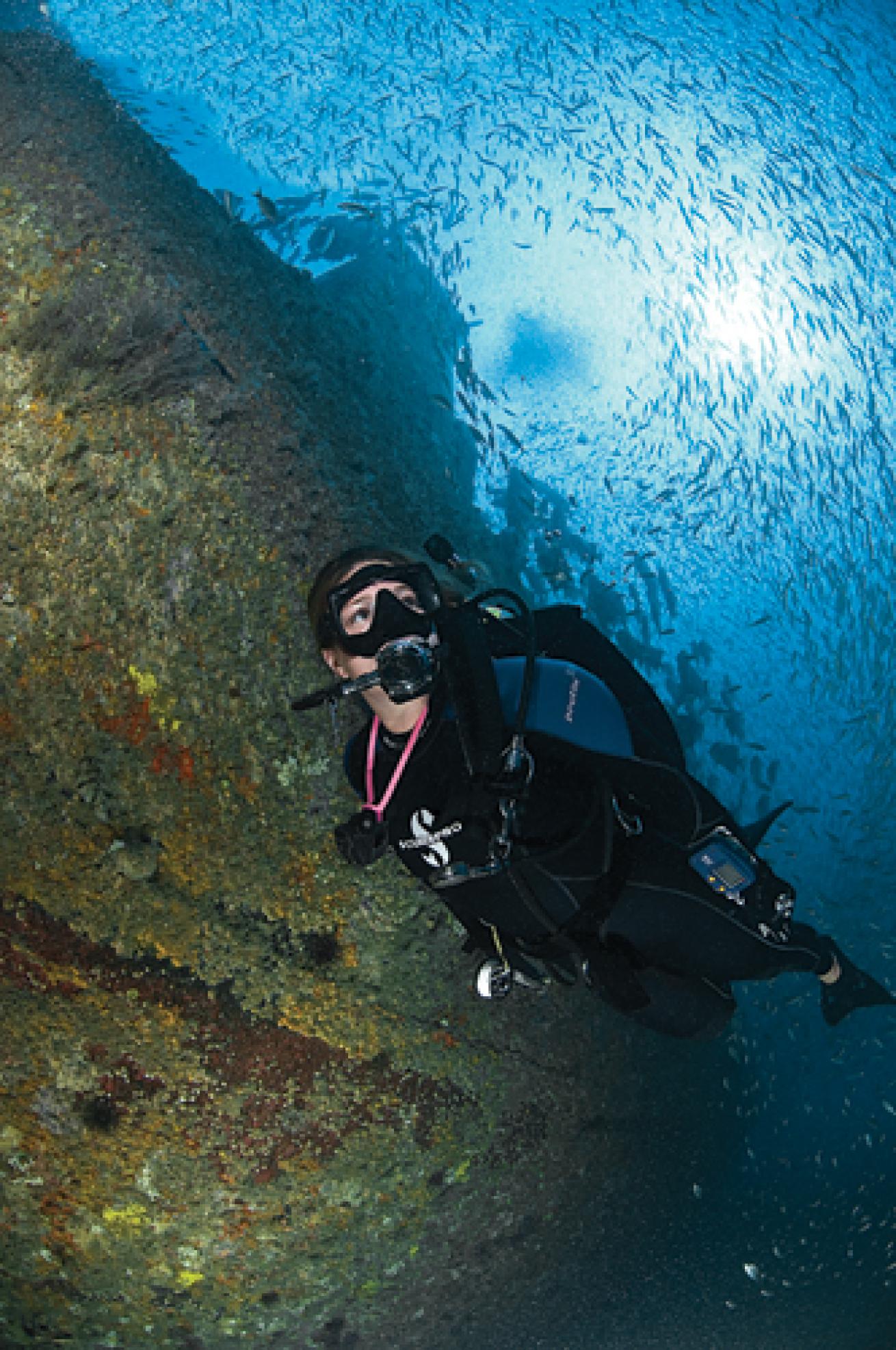
Michael GerkenNorth Carolina's WWII wrecks, such as the USCG Cutter Spar, are star attractions.
3. USCG Cutter Spar
Not all the wrecks of North Carolina met their end due to tragic events. The USCG Cutter Spar is one of the many wrecks sent to the bottom as part of the North Carolina artificial-reef project. The 180-foot buoy tender sits in 110 feet of water with a strong list to port. It’s fully intact, easily navigable and a favorite hangout for sand tiger sharks, schools of Atlantic spadefish and the occasional giant southern stingray. Amazingly, the Spar was moved 200 feet from its original location and rolled over on its port side when Hurricane Irene struck the coast in August 2011.
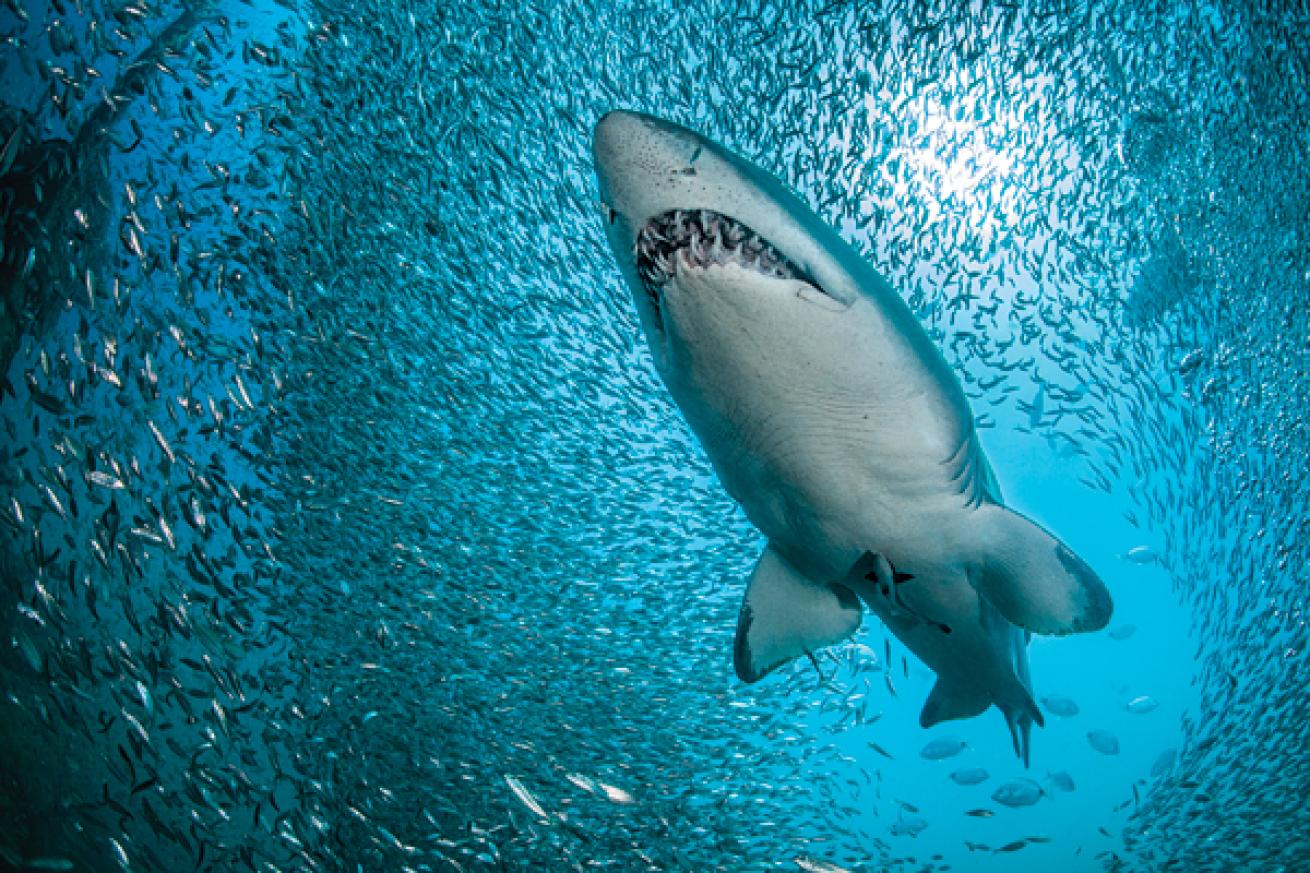
Marc MontocchioTiger Sharks on North Carolina Wrecks
4. USS SC Hurz
The captured World War I gunship, the USS Schurz, is a classic North Carolina wreck dive. The 255-foot ship was sunk June 21, 1918, 30 nautical miles south of Beaufort Inlet, after colliding with the SS Florida while sailing at night. When discovered in the 1980s, it was popular for those seeking to reclaim artifacts and take home a piece of history. Brass portholes, crew personal effects and weapons were some of the many items removed. Today, it is illegal to take artifacts from the Schurz, and most are content to see the beautiful reef system this wreck site has become. Colorful sea fans, dense schools of baitfish and the occasional shark keep divers returning year after year.
5. Caribsea
A personal favorite, the Caribsea is one of those hit-or-miss dive sites. Notorious for low-visibility conditions, as well as large schools of sand tigers, this dive can be a top-shelf experience when blue water pushes in on rare days, exposing up to 100 sharks in one spot. Sunk on March 11, 1942, by a German U-boat attack, this 251-foot freighter sits in 90 feet of water on the east side of Cape Lookout Shoals. Scientists believe the sand tiger sharks gather here during the summer months to mate.
Itinerary
Day 1 | In the event of bad weather, book at least three days of diving in case you lose one or two days due to canceled charters. If WWII history is your thing, request a dive on the U-352, with a second dive on the USCG Cutter Spar for sand tiger action. After, head to nearby Beaufort and check into a historic bed and-breakfast in the waterfront village.
Day 2 | Try the W.E. Hutton (Papoose) for a deeper experience and do the Aeolus or USS Schurz for dive two. You’ll have worked up a hearty appetite, so go to Floyd’s 1921 in Morehead City for Southern favorites with a gourmet flare.
Day 3 | Finish your trip with a dive on the USS Indra, one of the most dived wrecks in the Outer Banks. If you can’t see fish underwater due to bad weather, visit the Pine Knoll Shores Aquarium, spend the day on one of the area’s many famous beaches, or try the Civil War museum at Fort Macon State Park, or go explore the Maritime Museum in the town of Beaufort.
Need to Know:
>When to Go The dive season on the Outer Banks kicks off in April and picks up full steam June through October, with peak months in July and August.
>Dive Conditions The water typically warms up to the mid-70s by June and peaks in the low 80s in July and August. Visibility is at the mercy of Mother Nature but tends to average 50 feet during peak season. However, 100-foot-viz days are not unheard of.
>Operators With more than 25 years of experience diving the wrecks of the Outer Banks, Olympus Dive Center in Morehead City is a good bet for getting to the top wrecks. For smaller charters, try the Atlantis V, a six-pack boat out of Atlantic Beach.
>Price Tag The charter fee depends on whether you’re diving tec or rec. Inshore single-tank shallow dives start at $65, with full-day offshore charters ranging from $125 to $165 (tanks, air fills and rental gear not included). Stay at the Olympus Divers Lodge for $25 per night, or numerous local hotels, motels or bed-and-breakfasts ranging from $55 to $200 per night during peak season.

